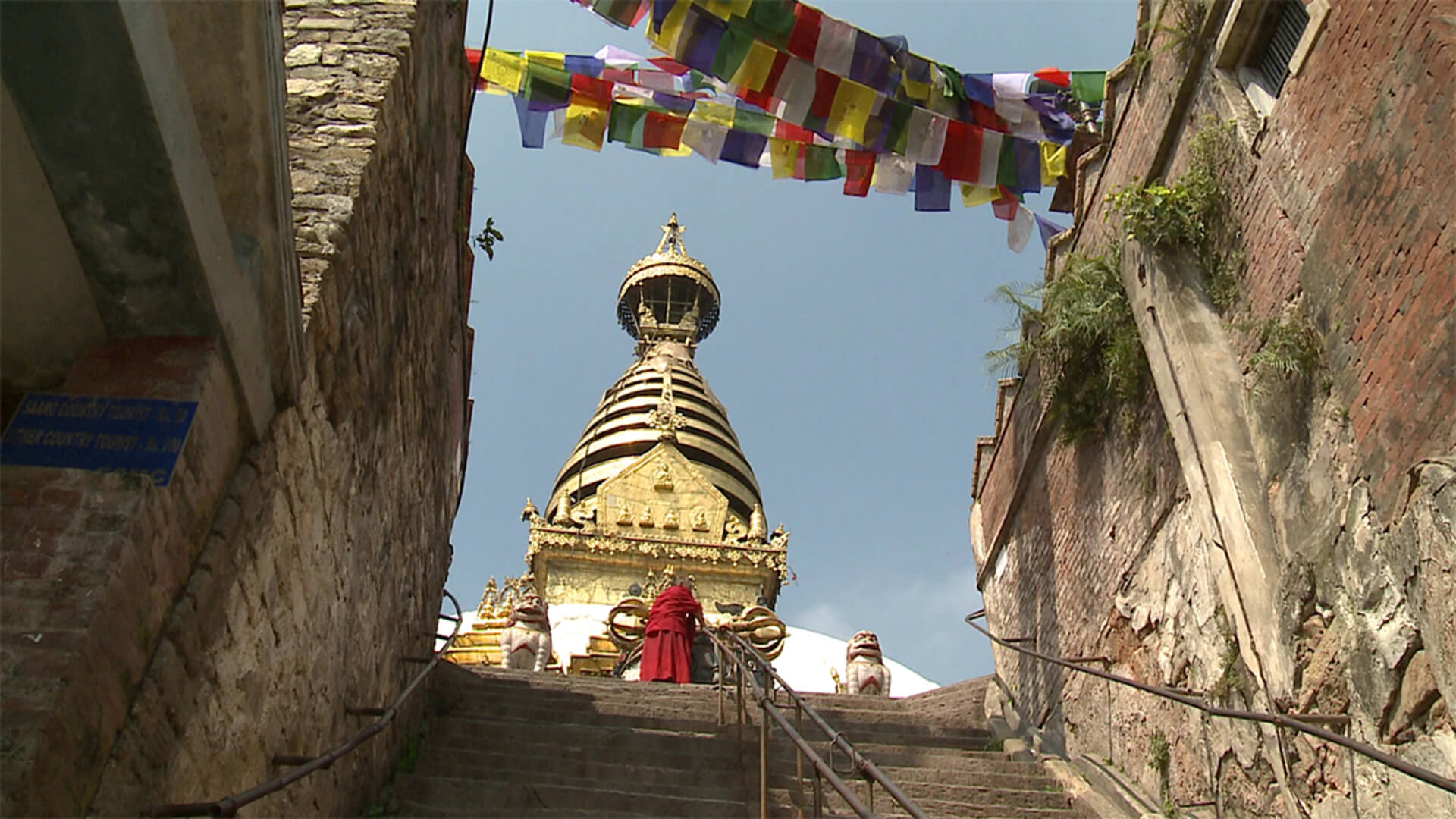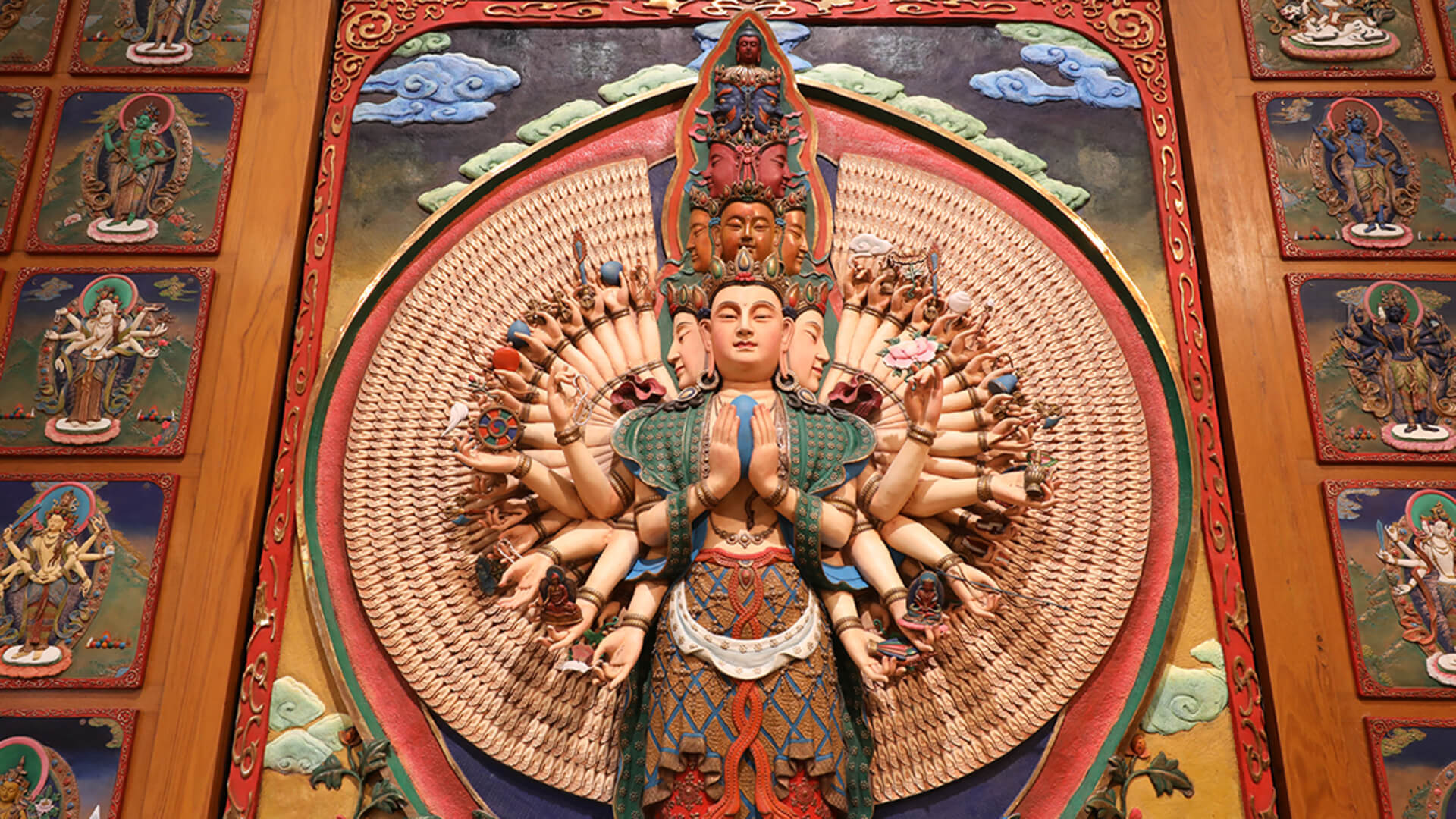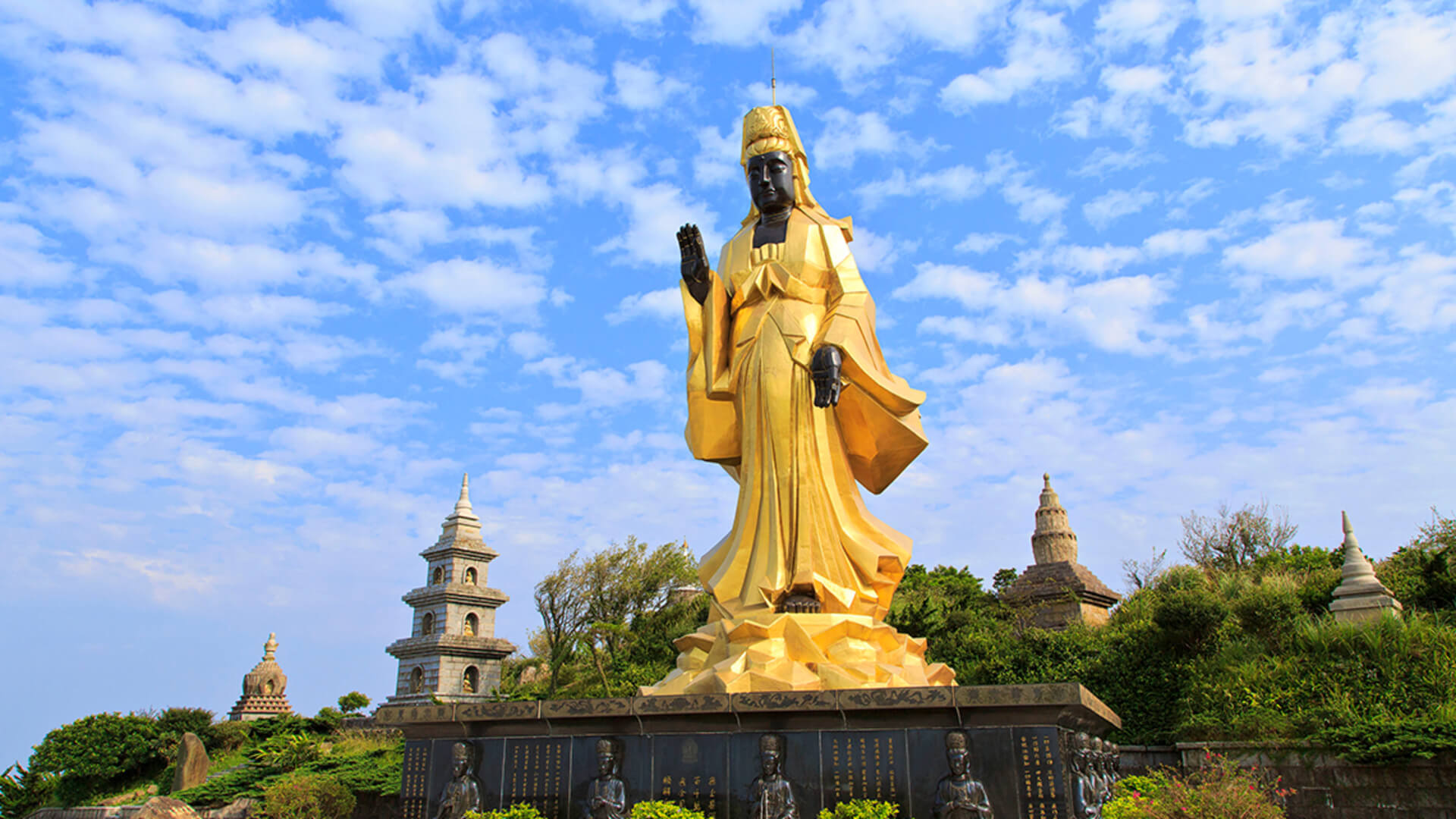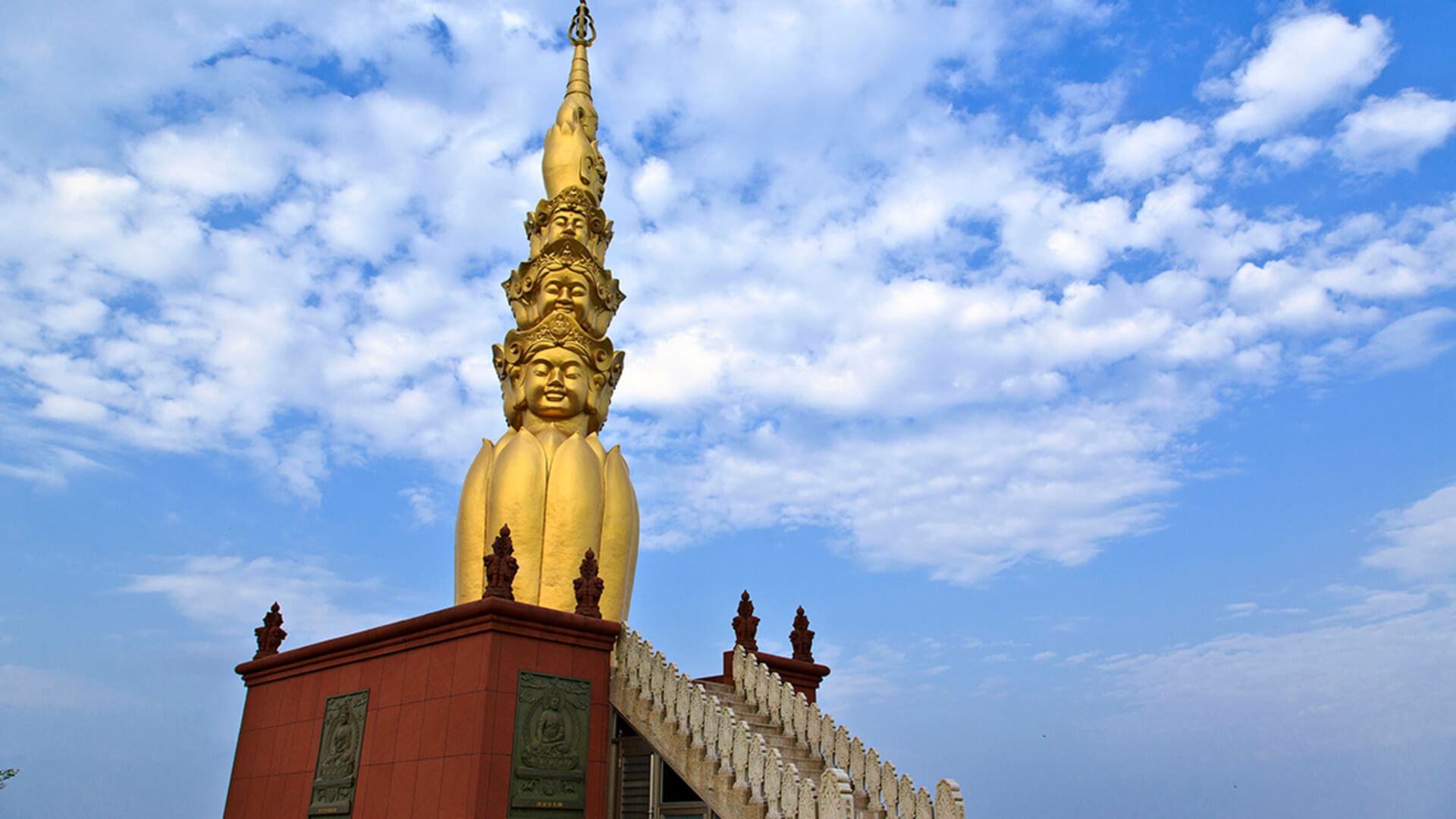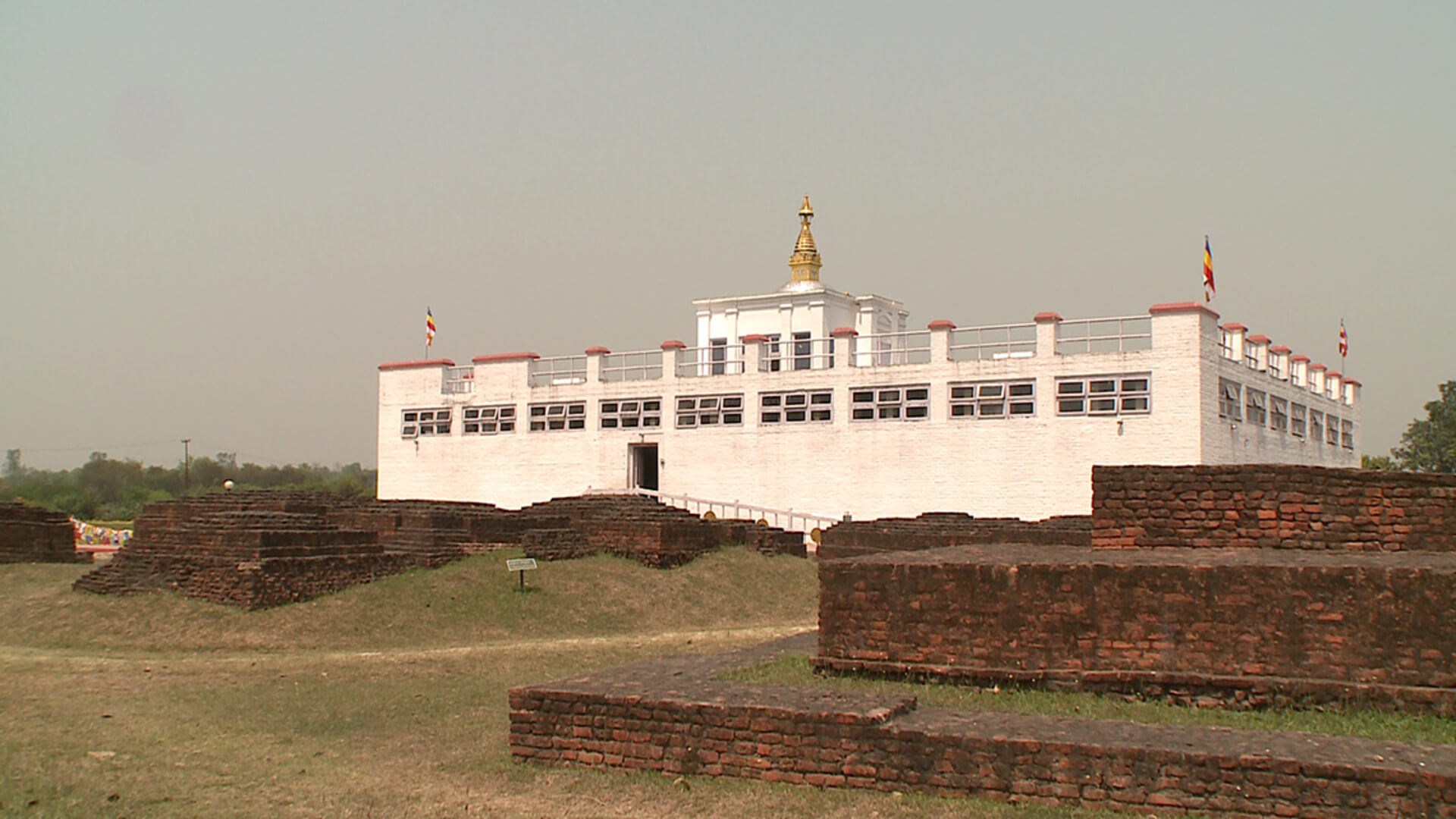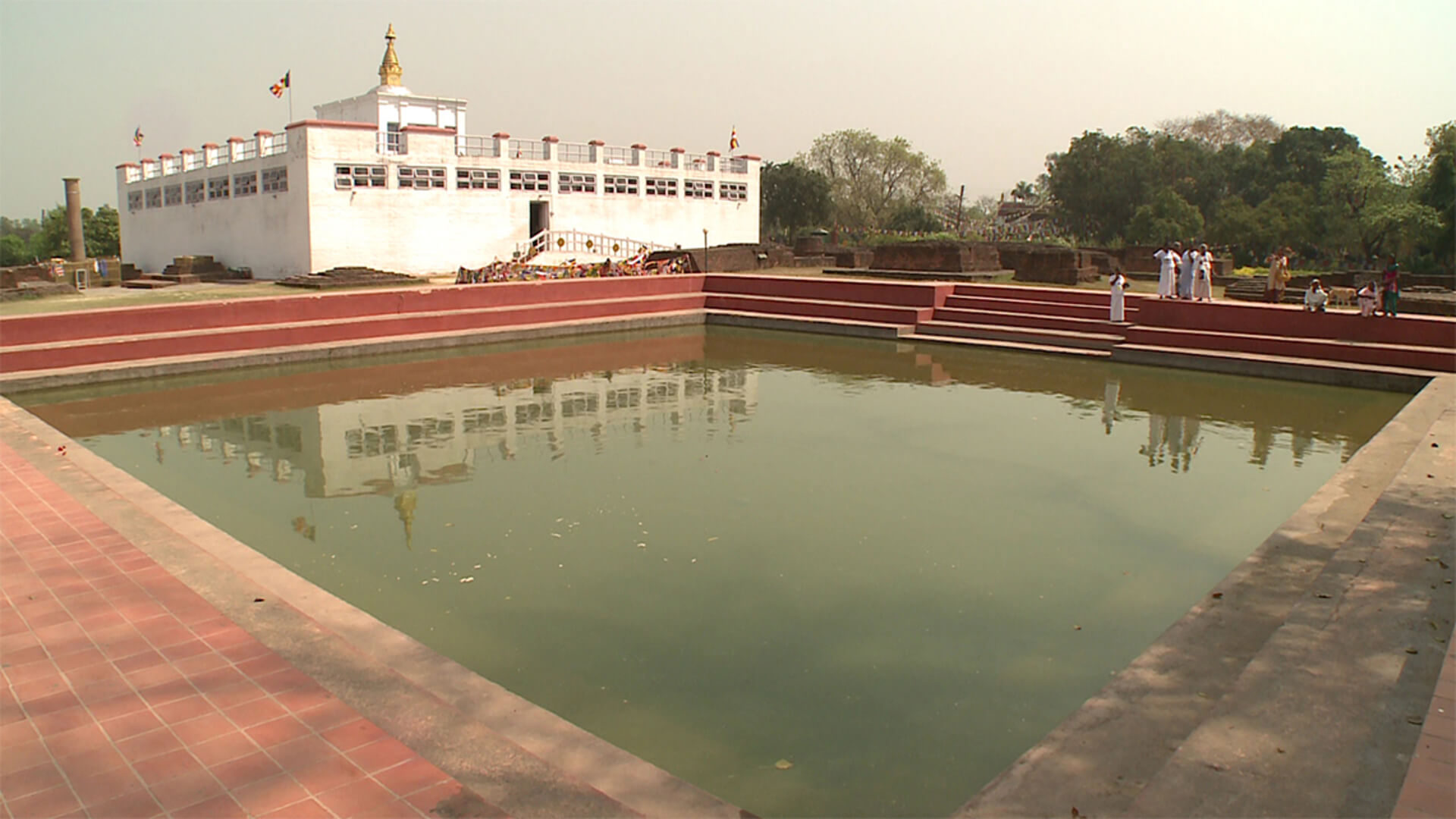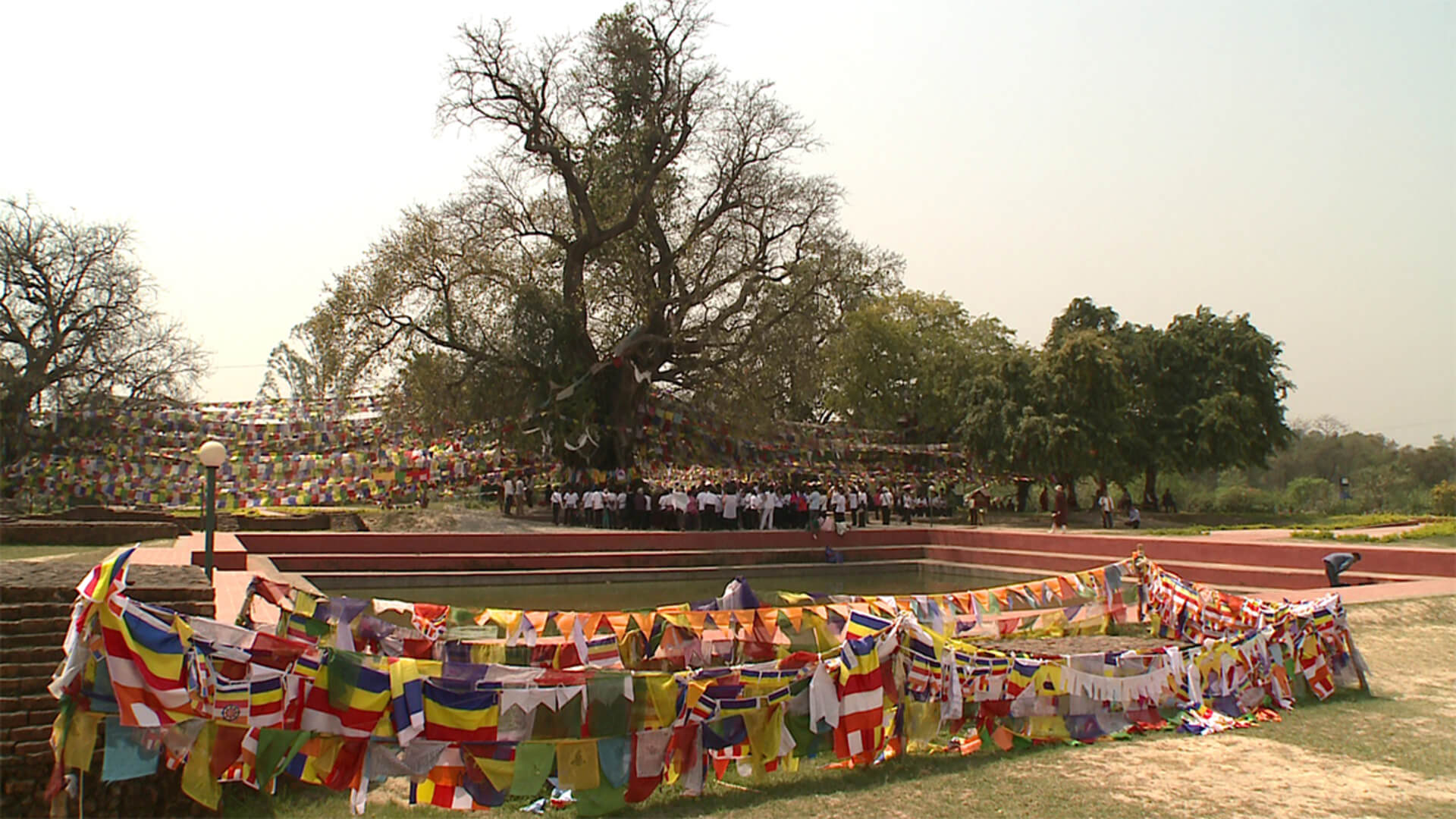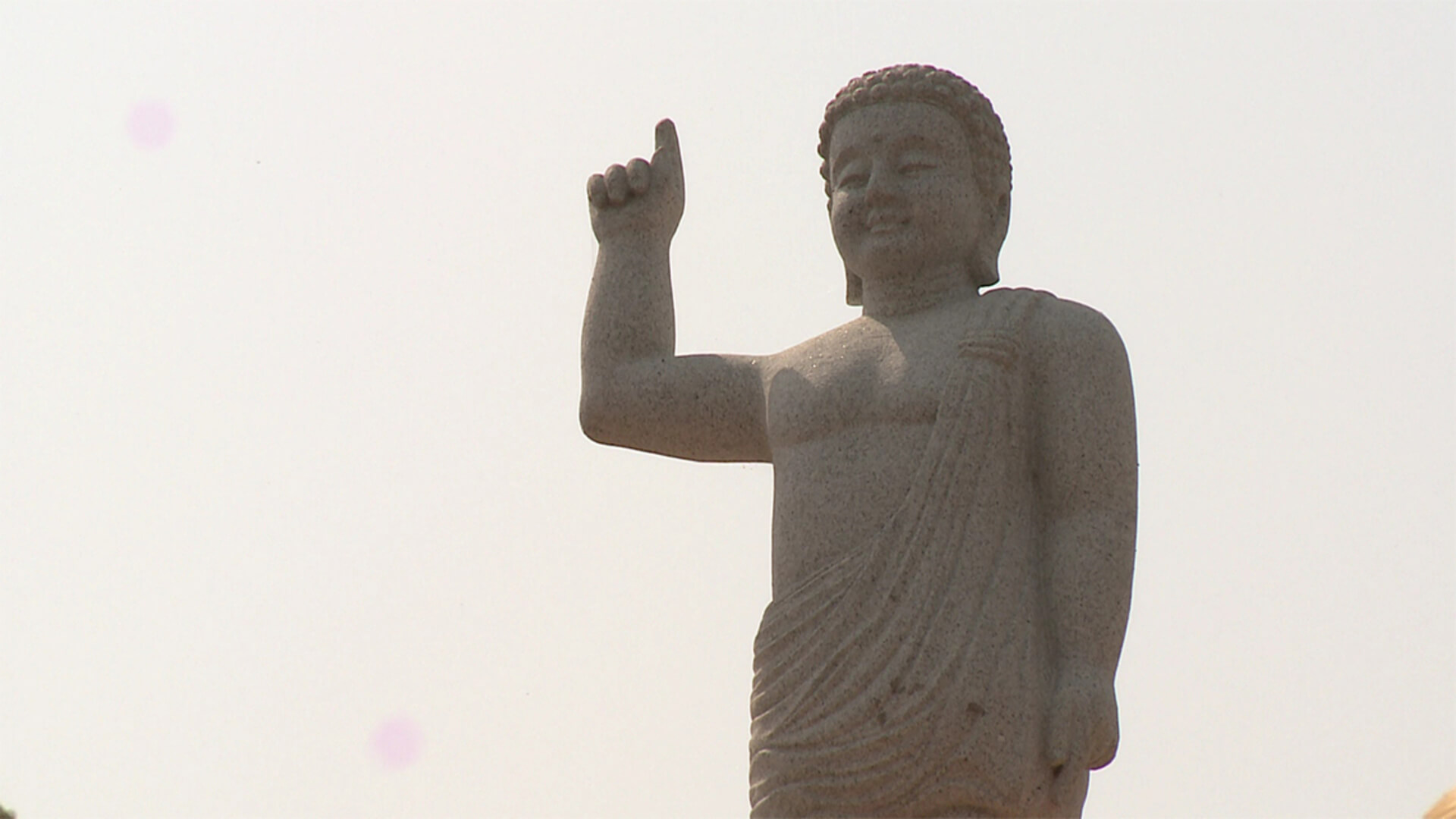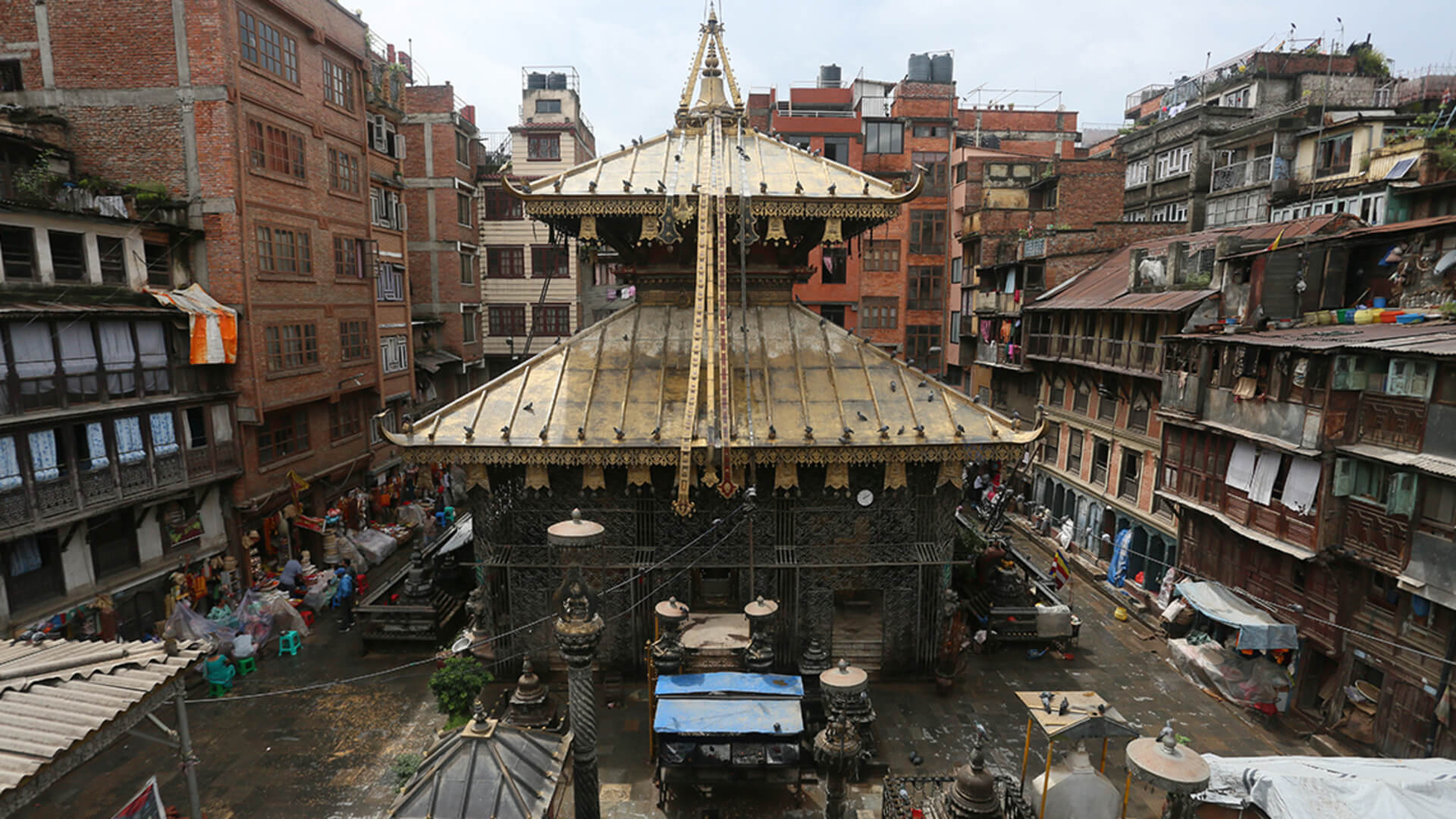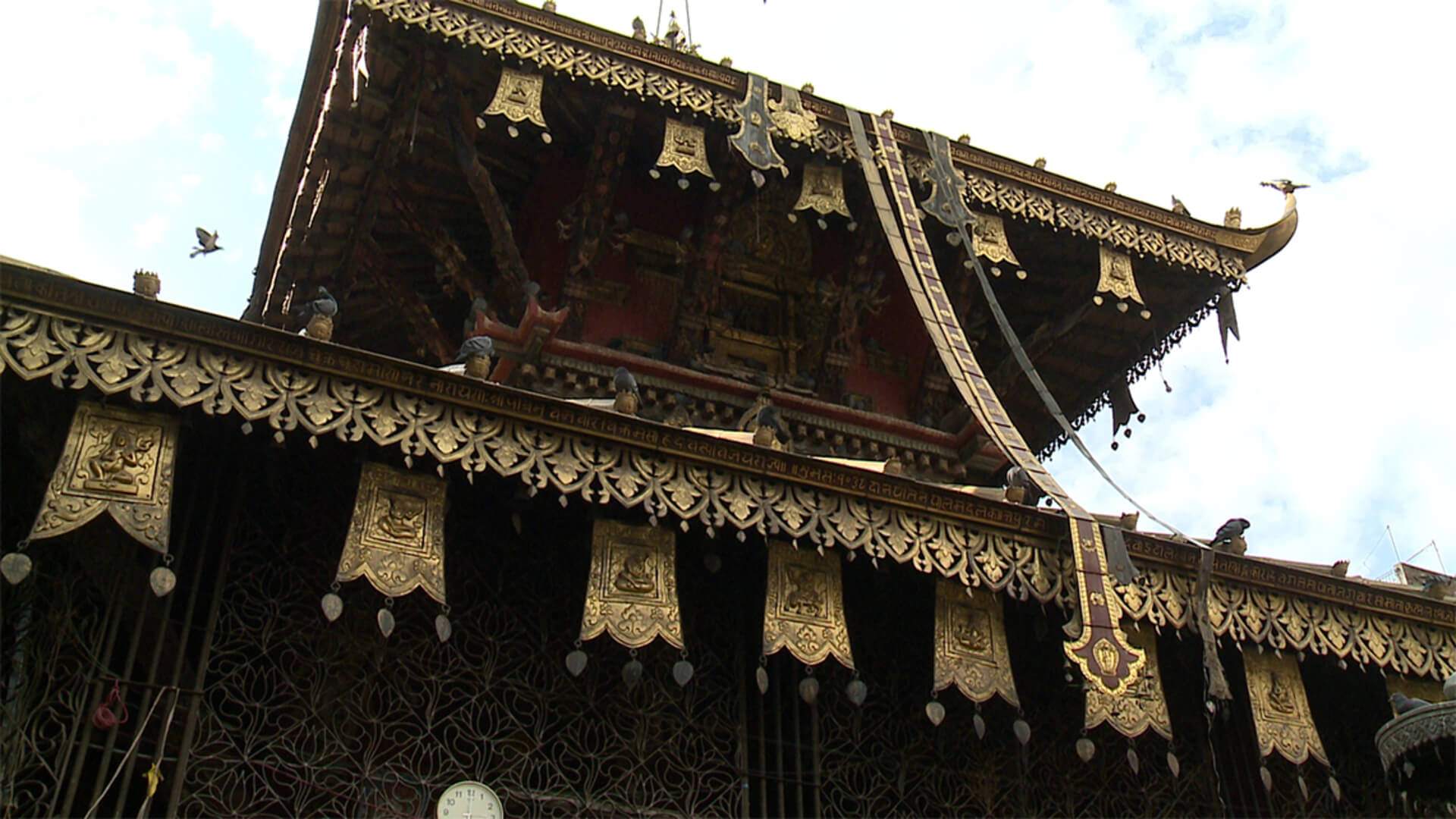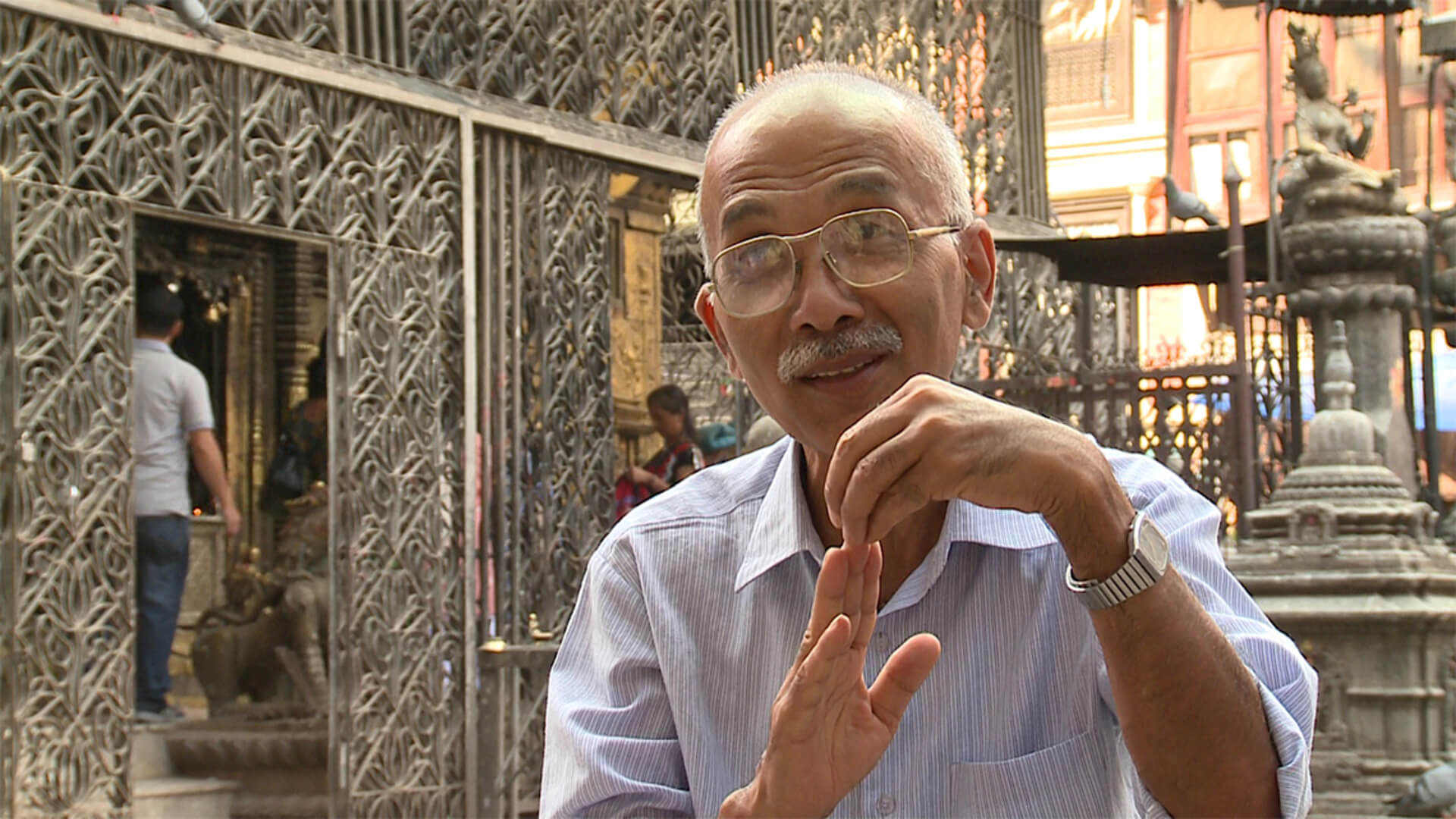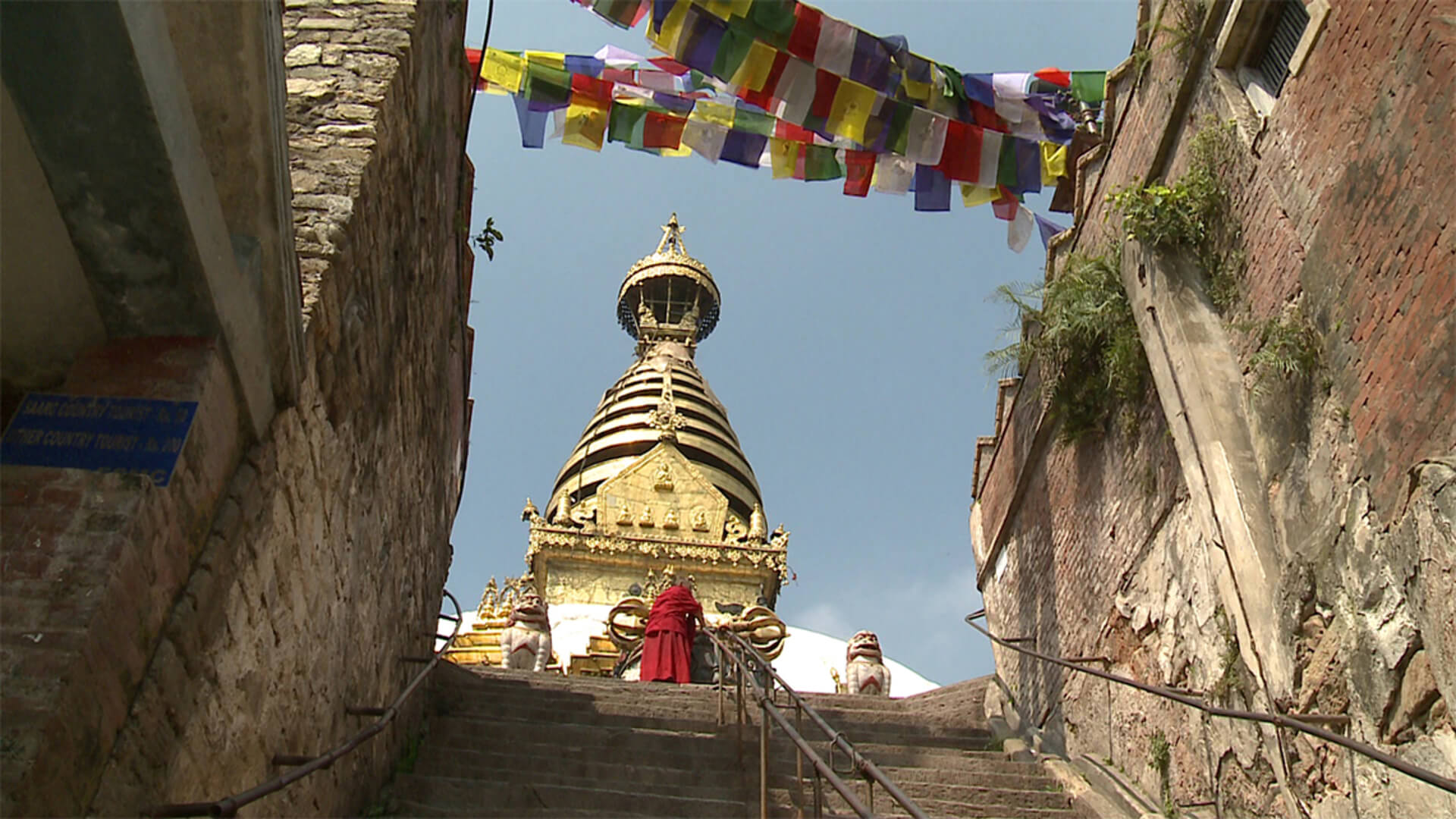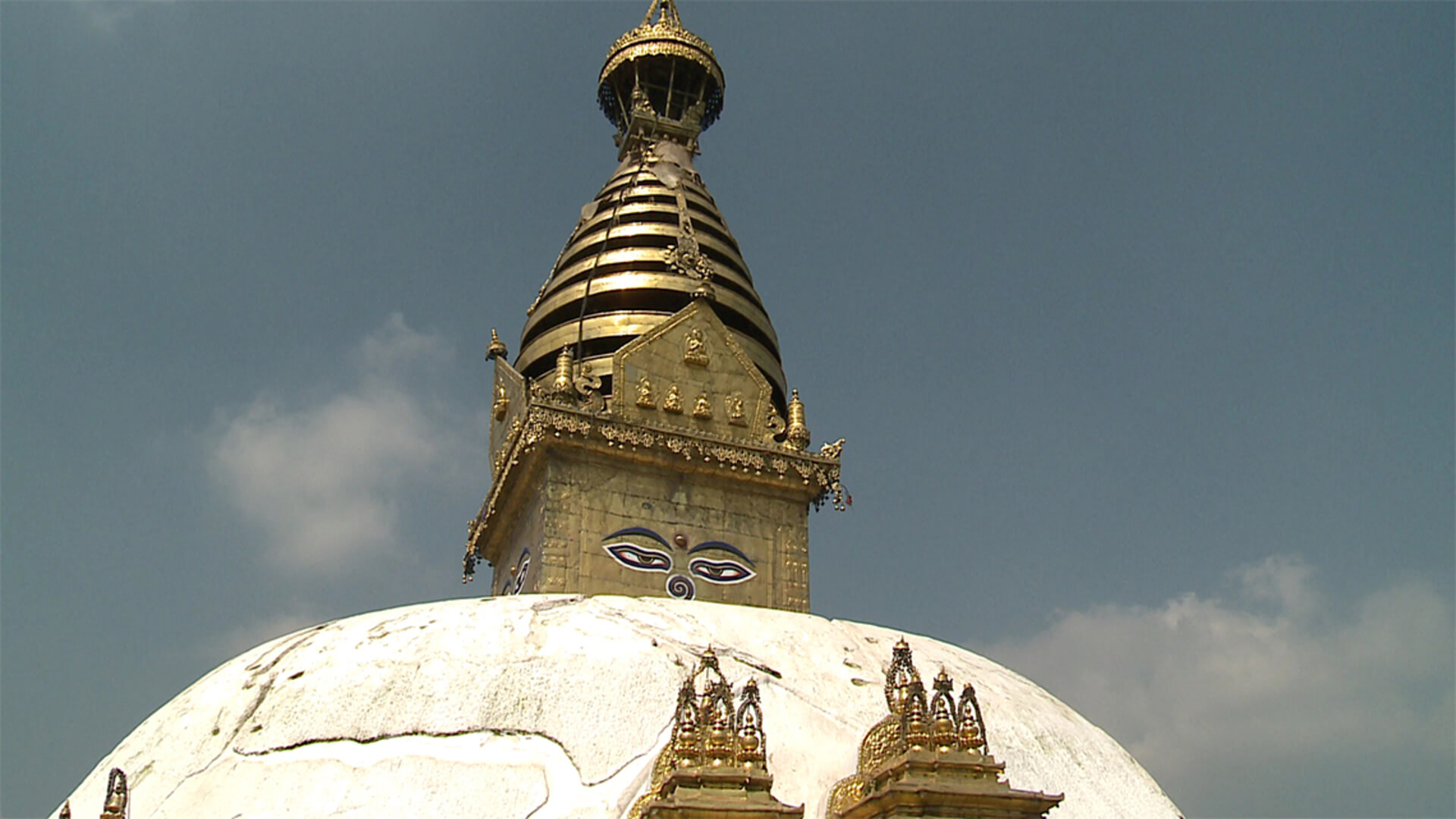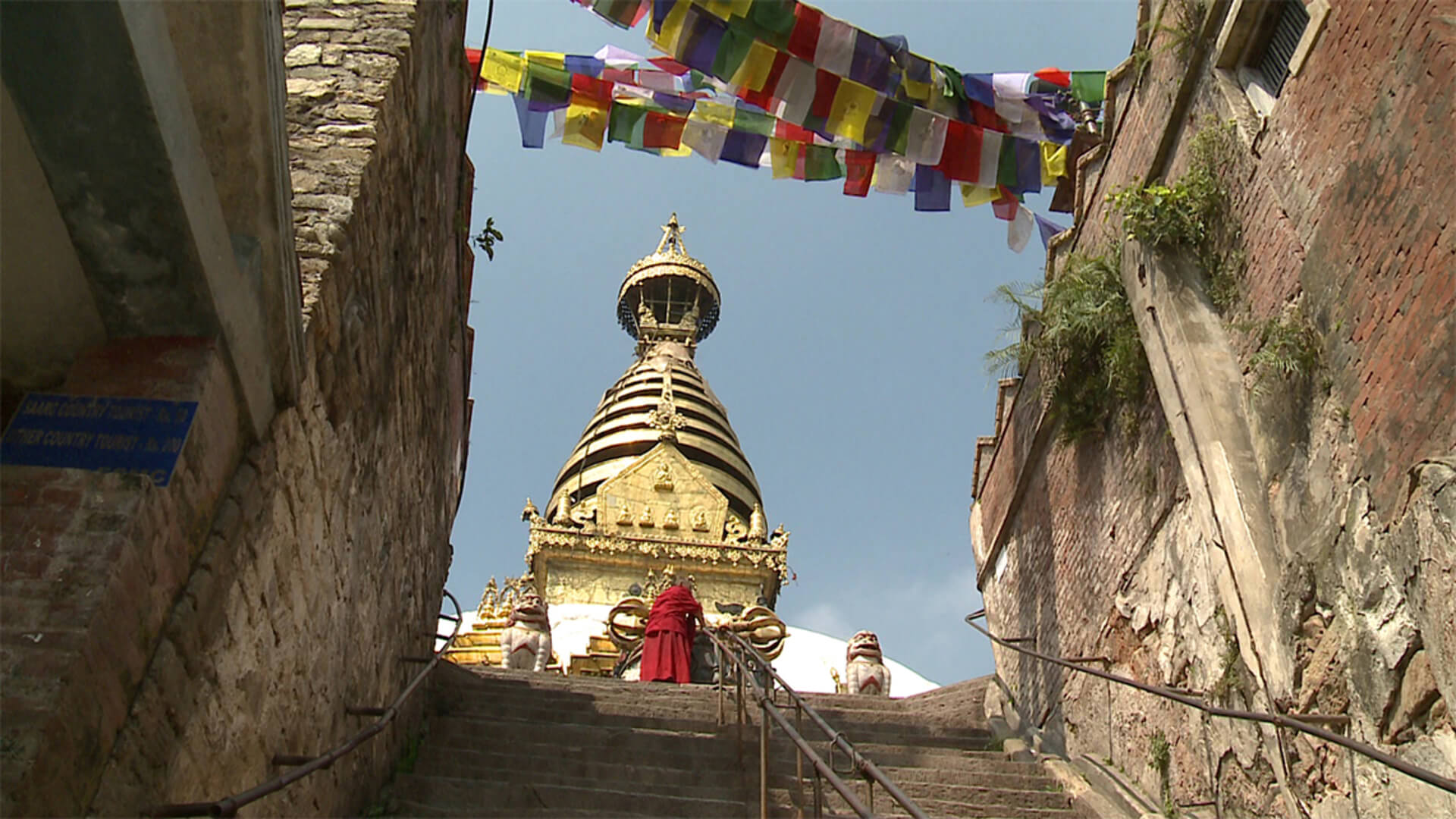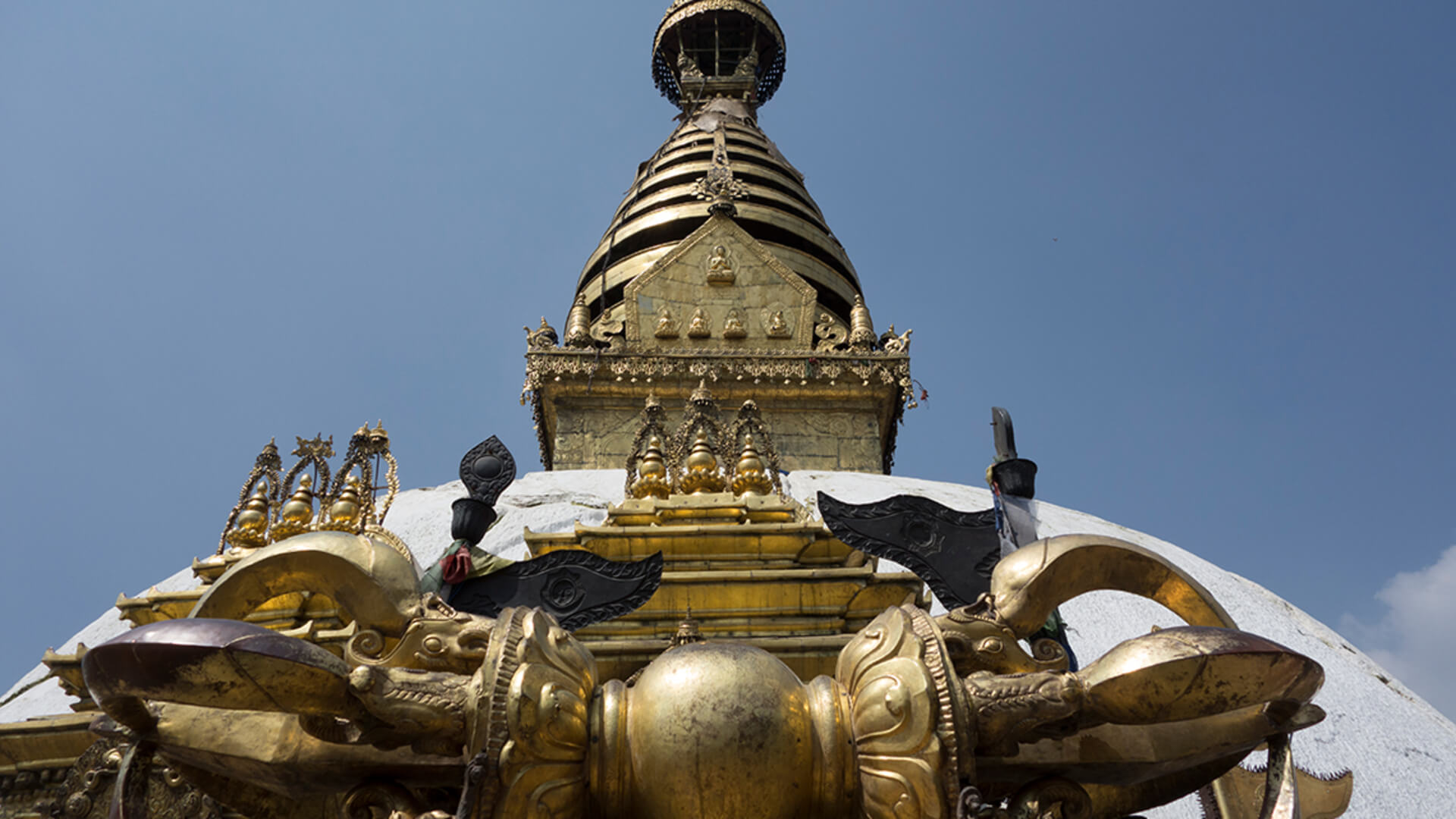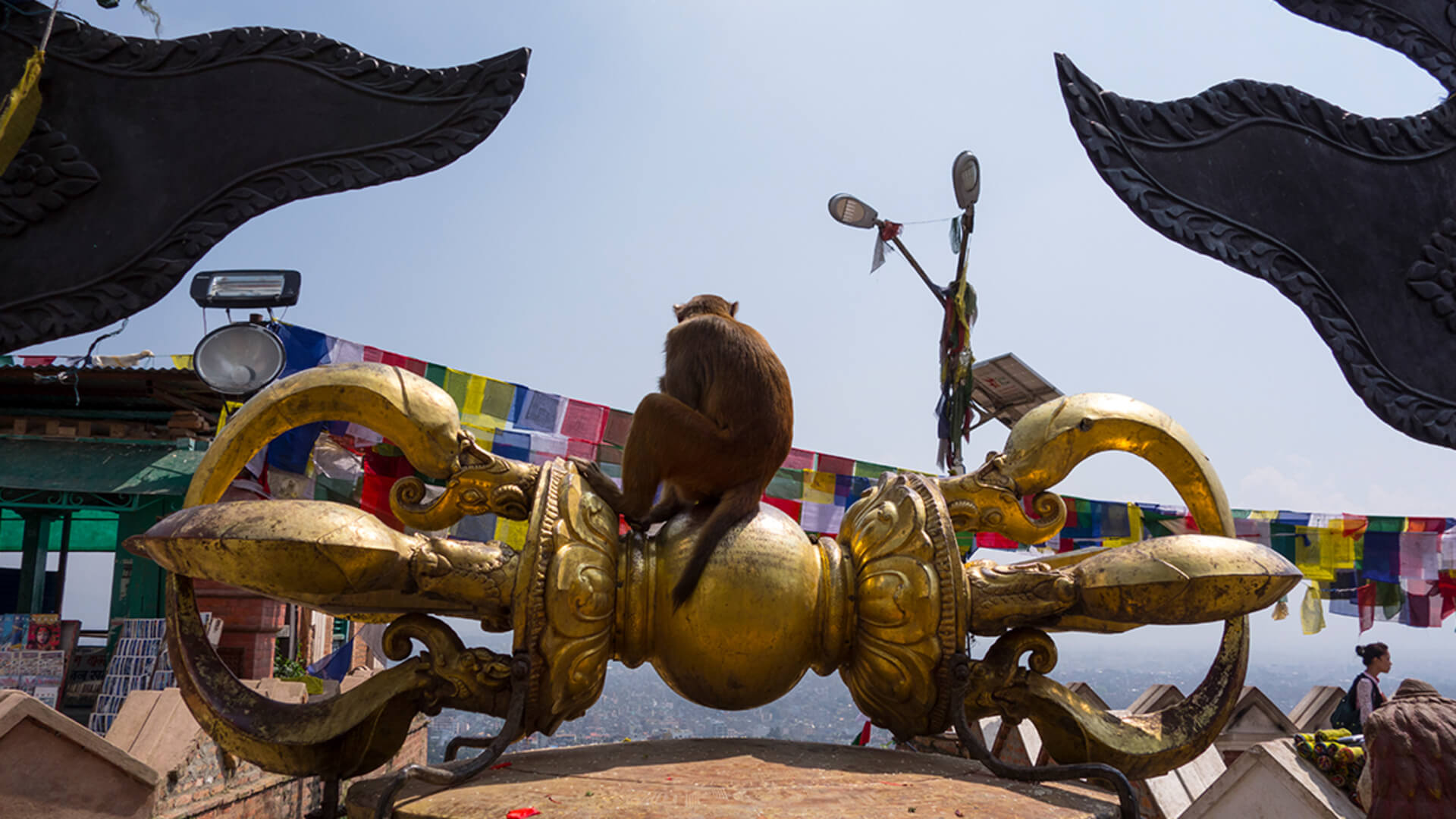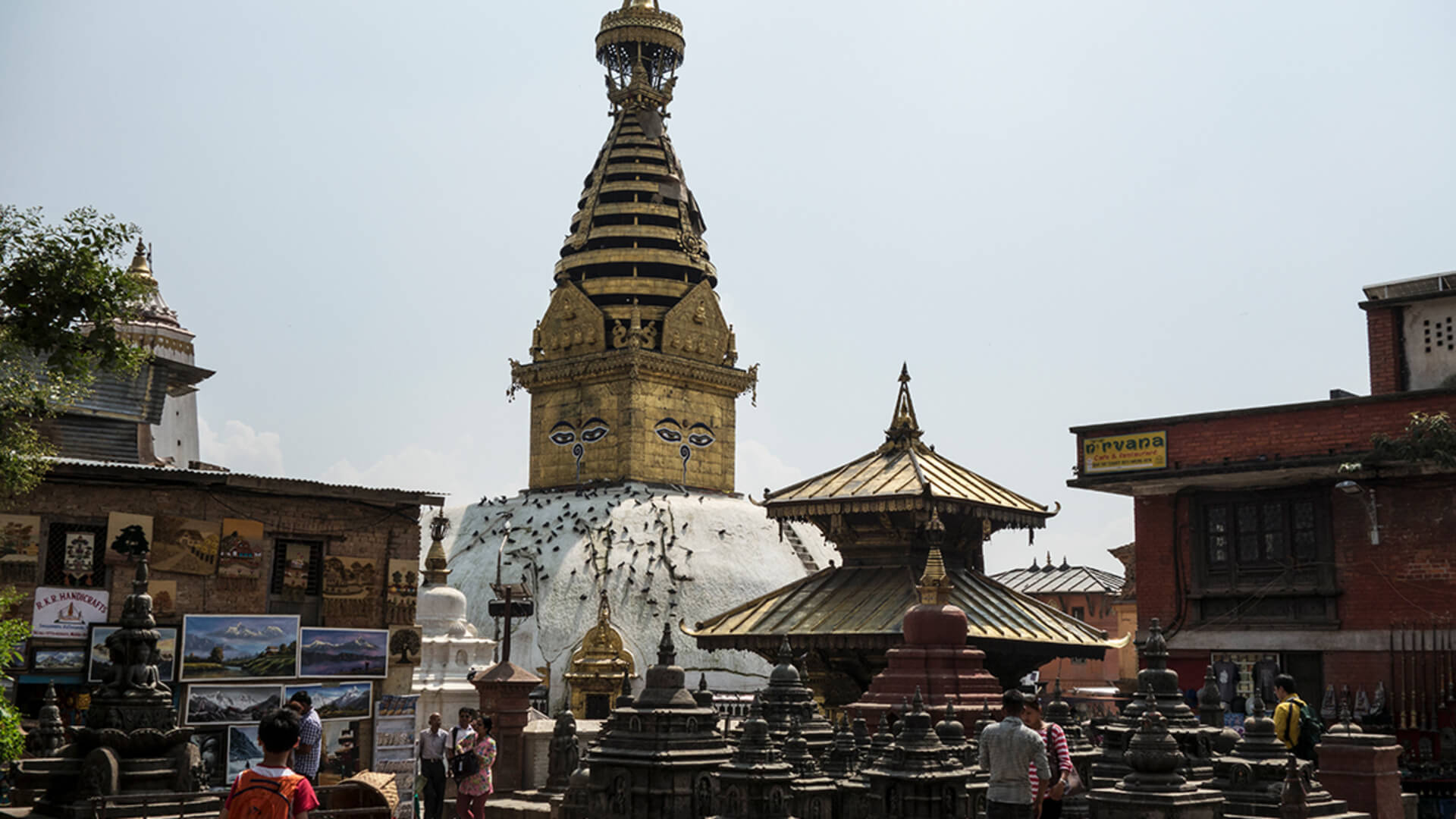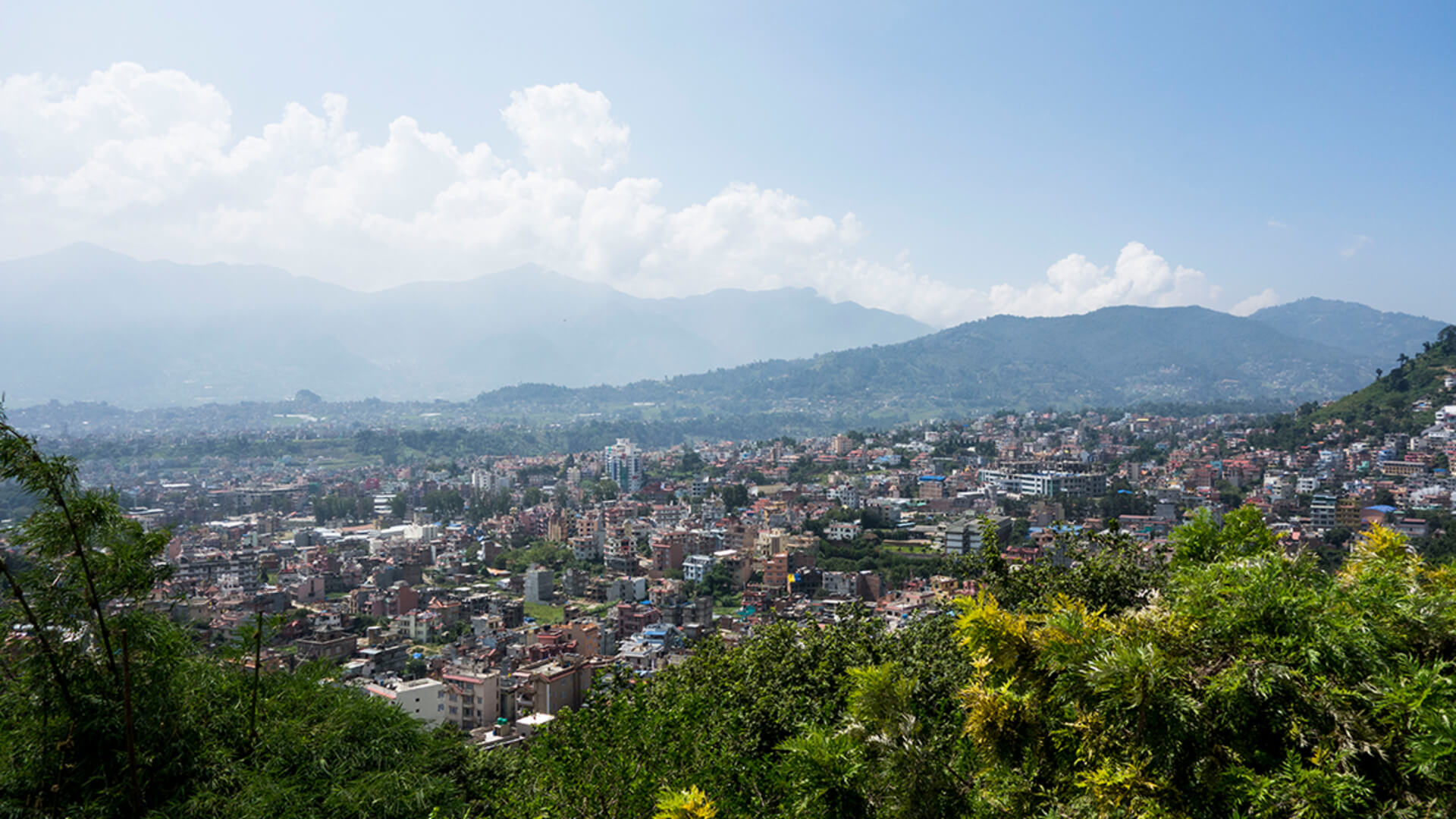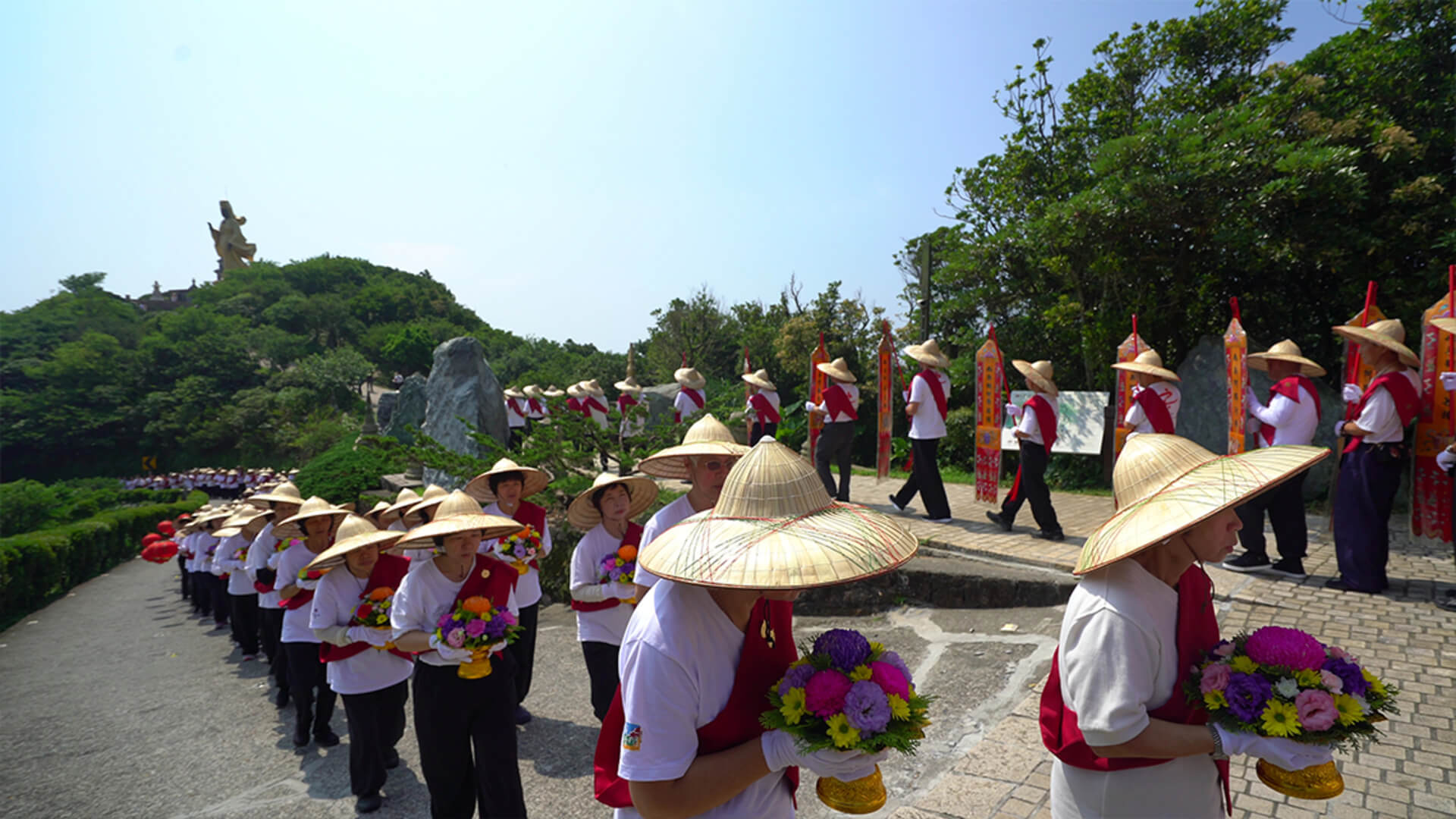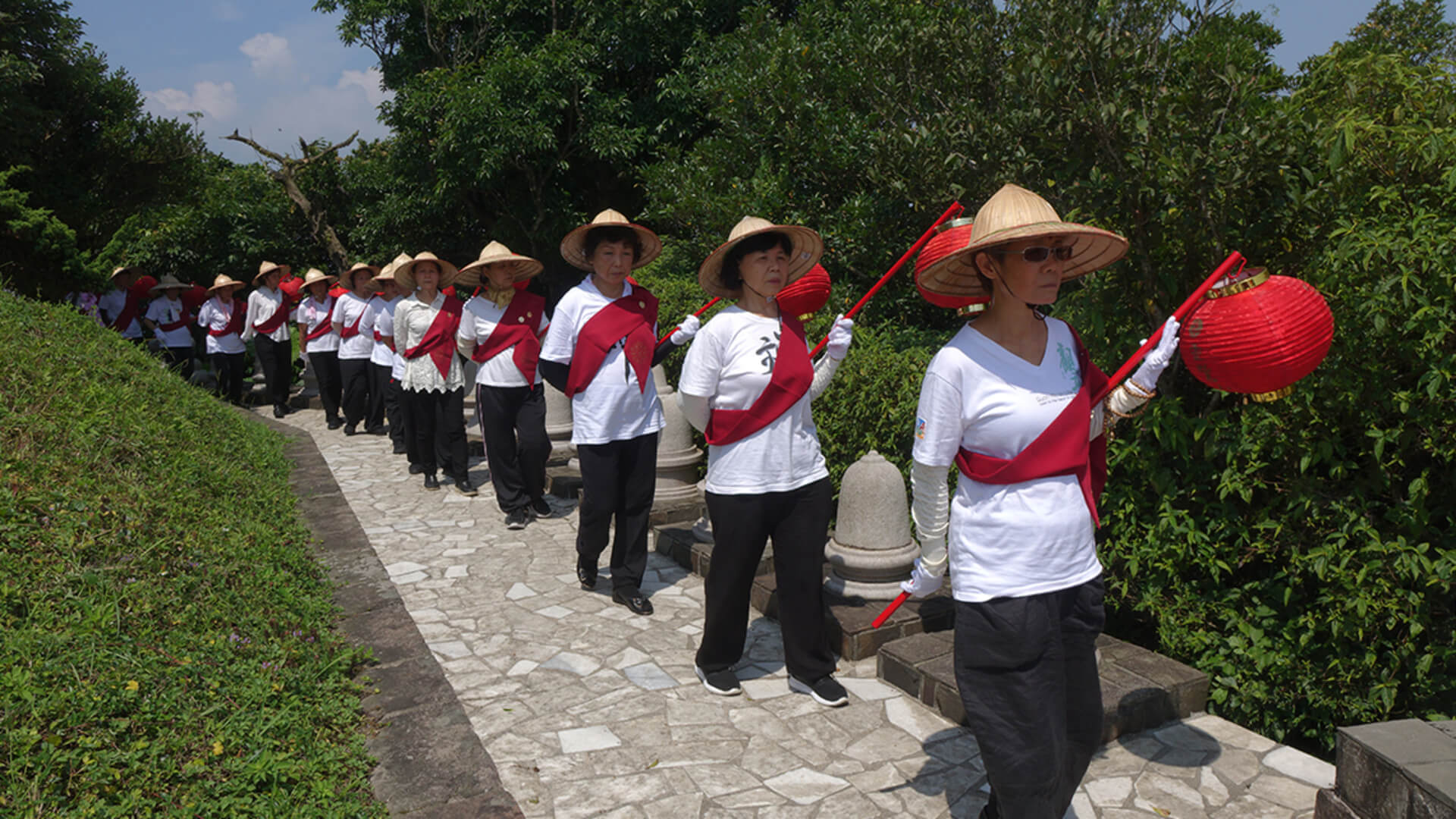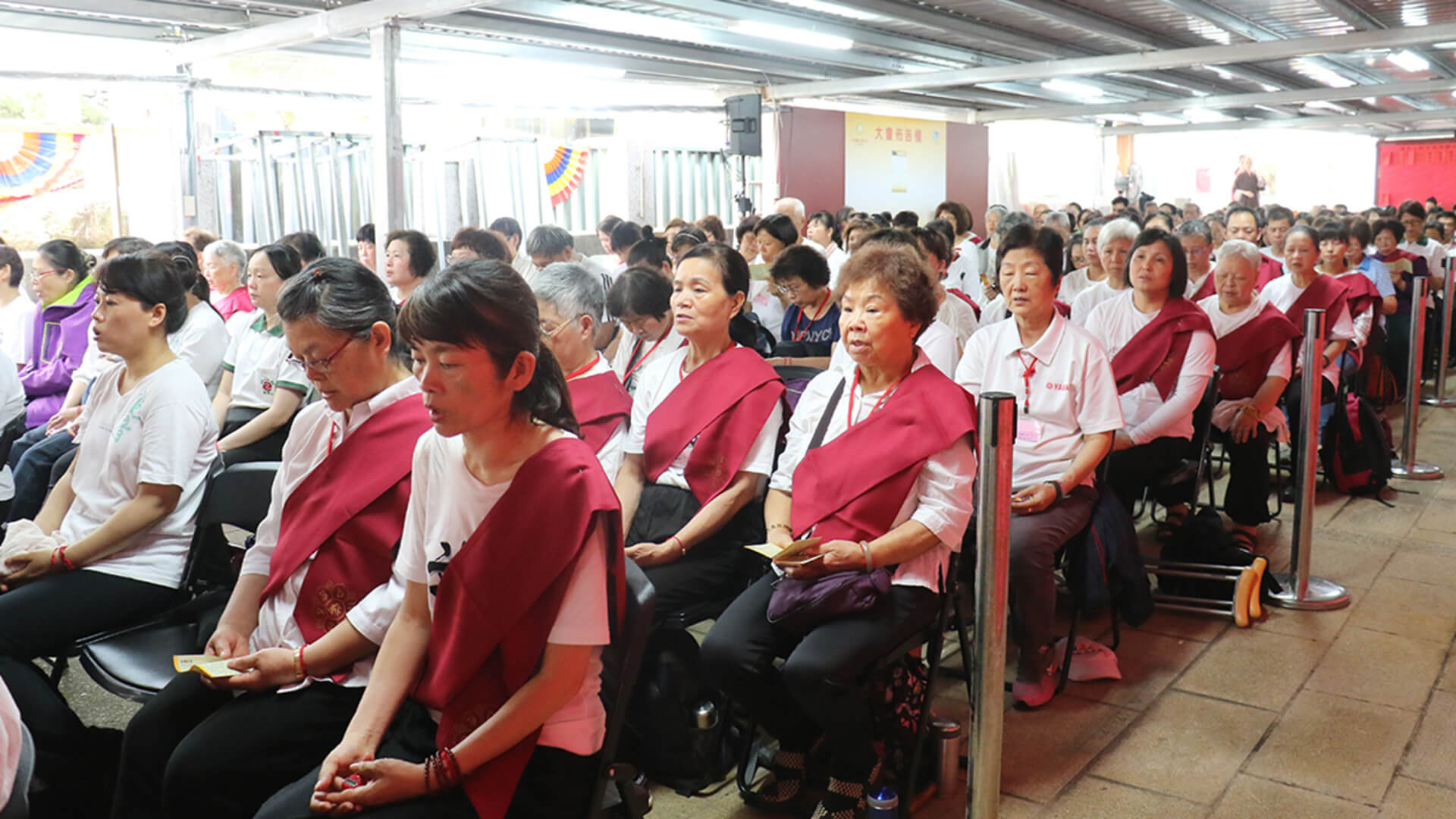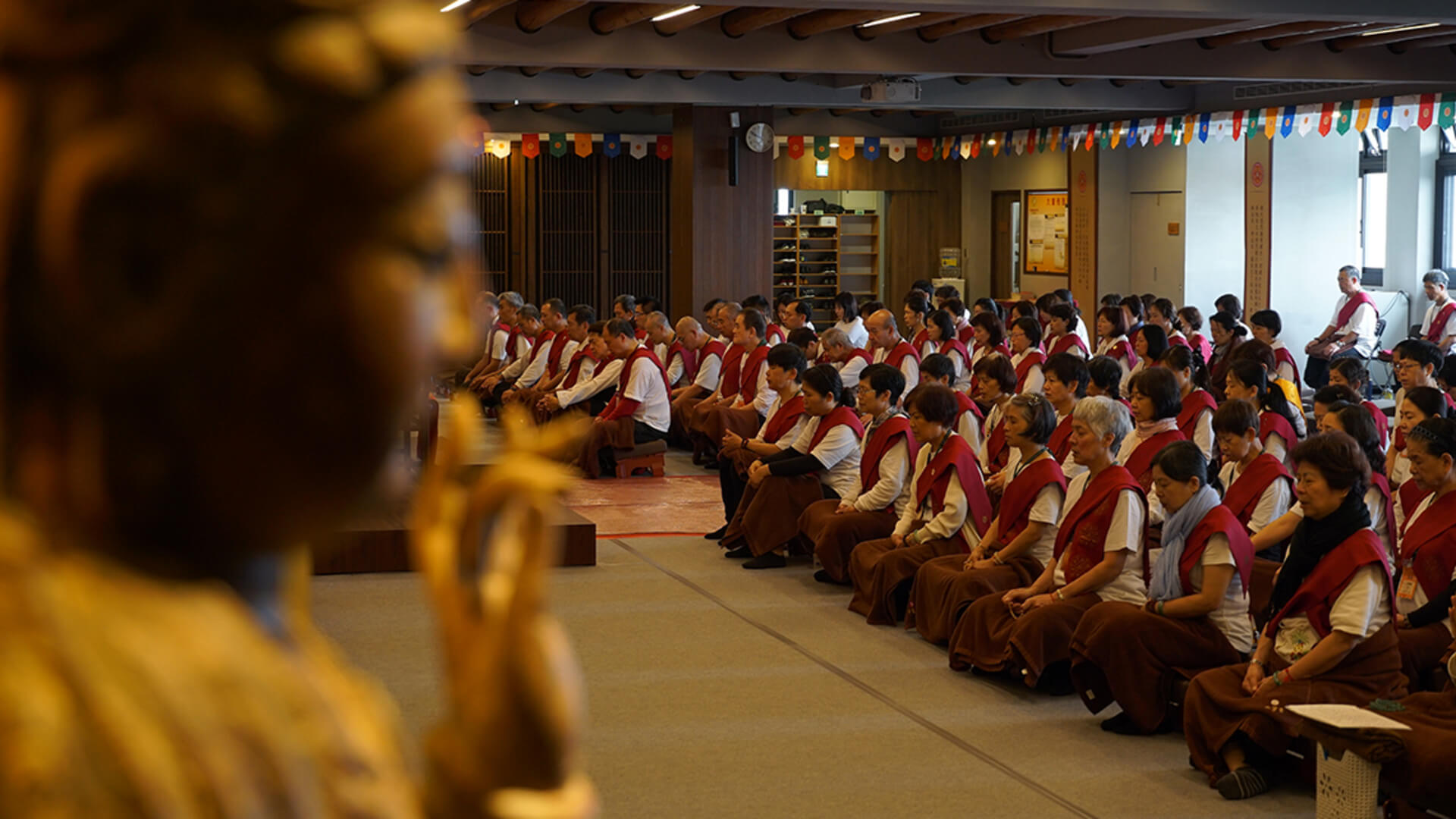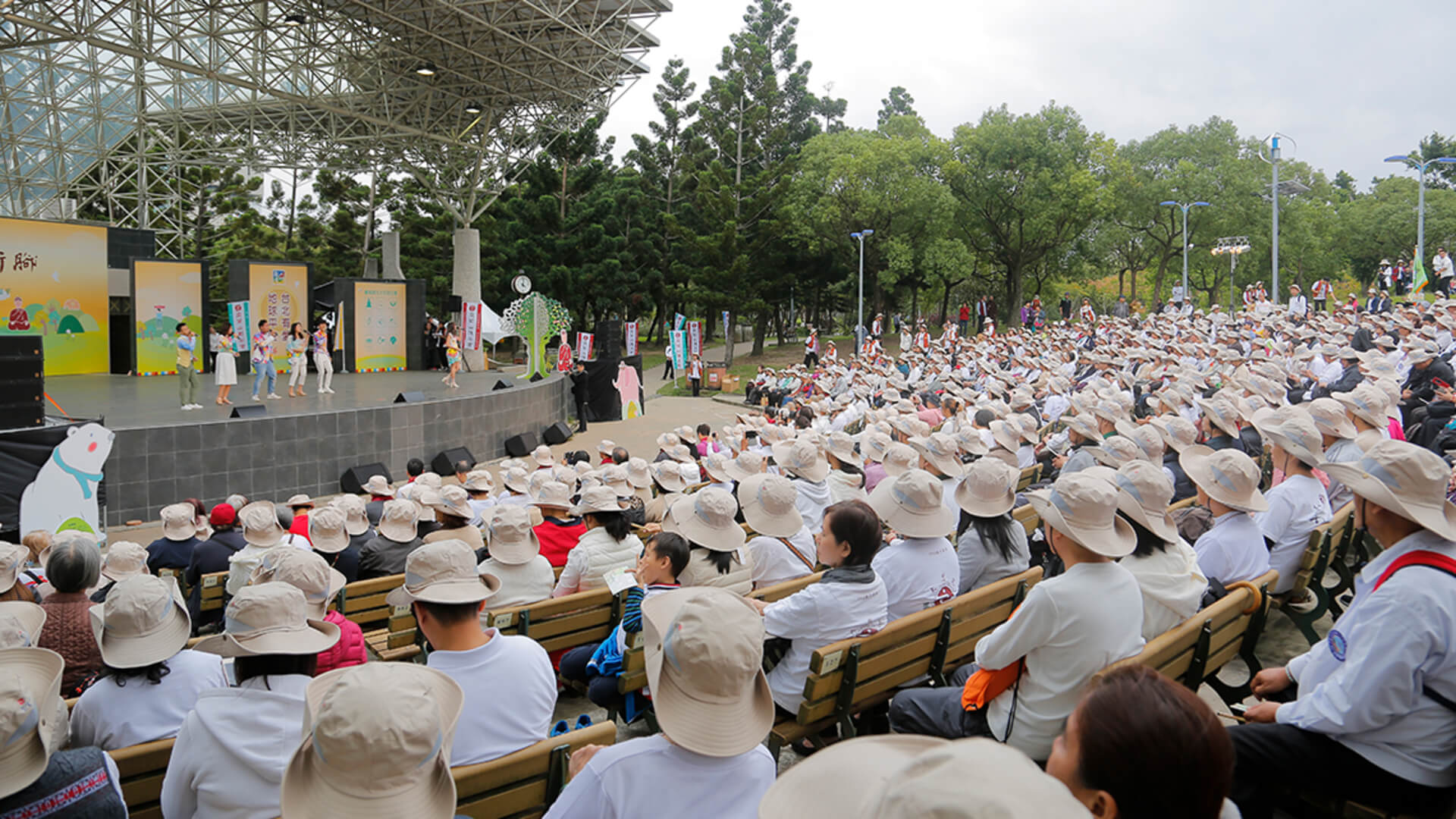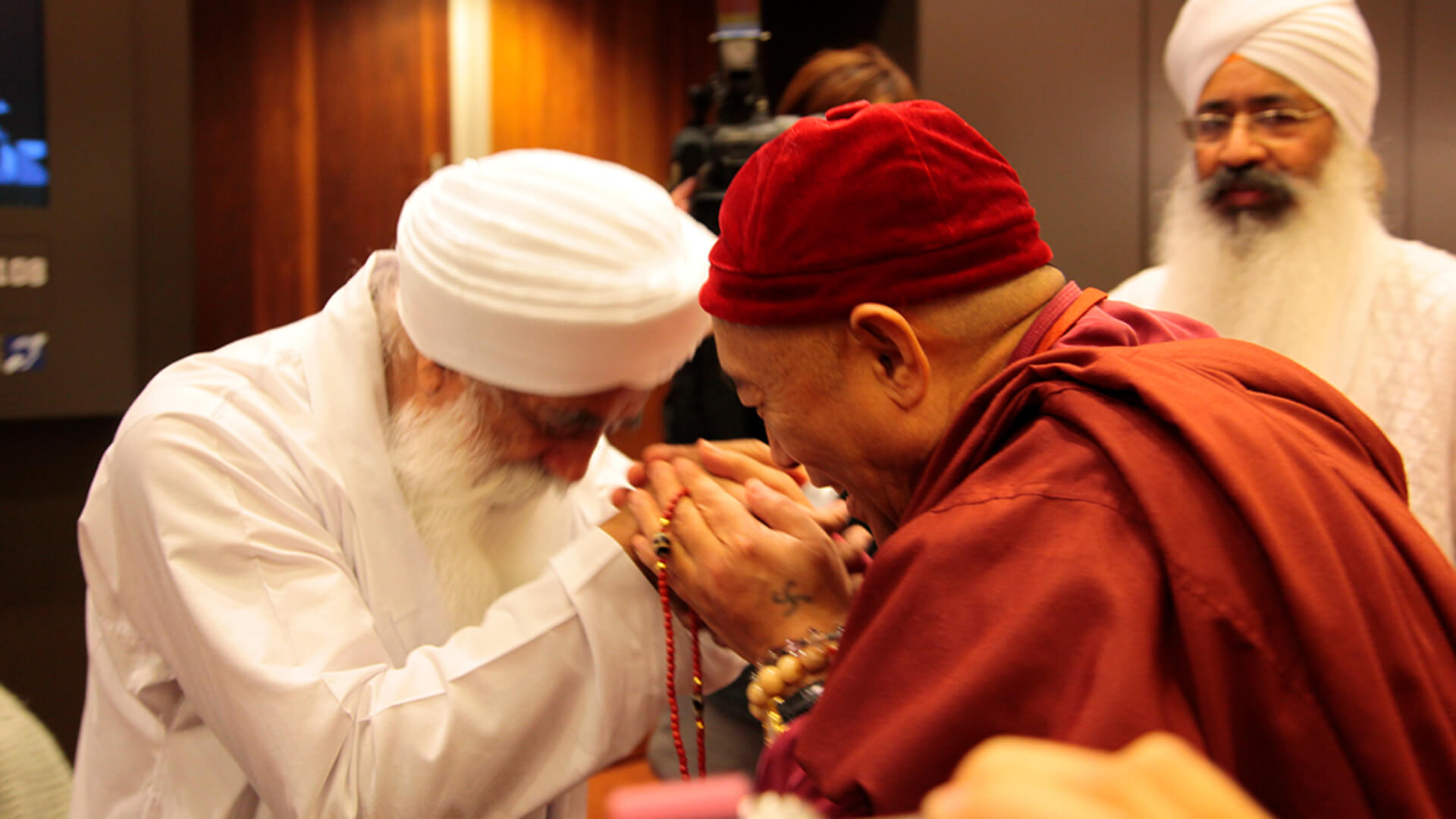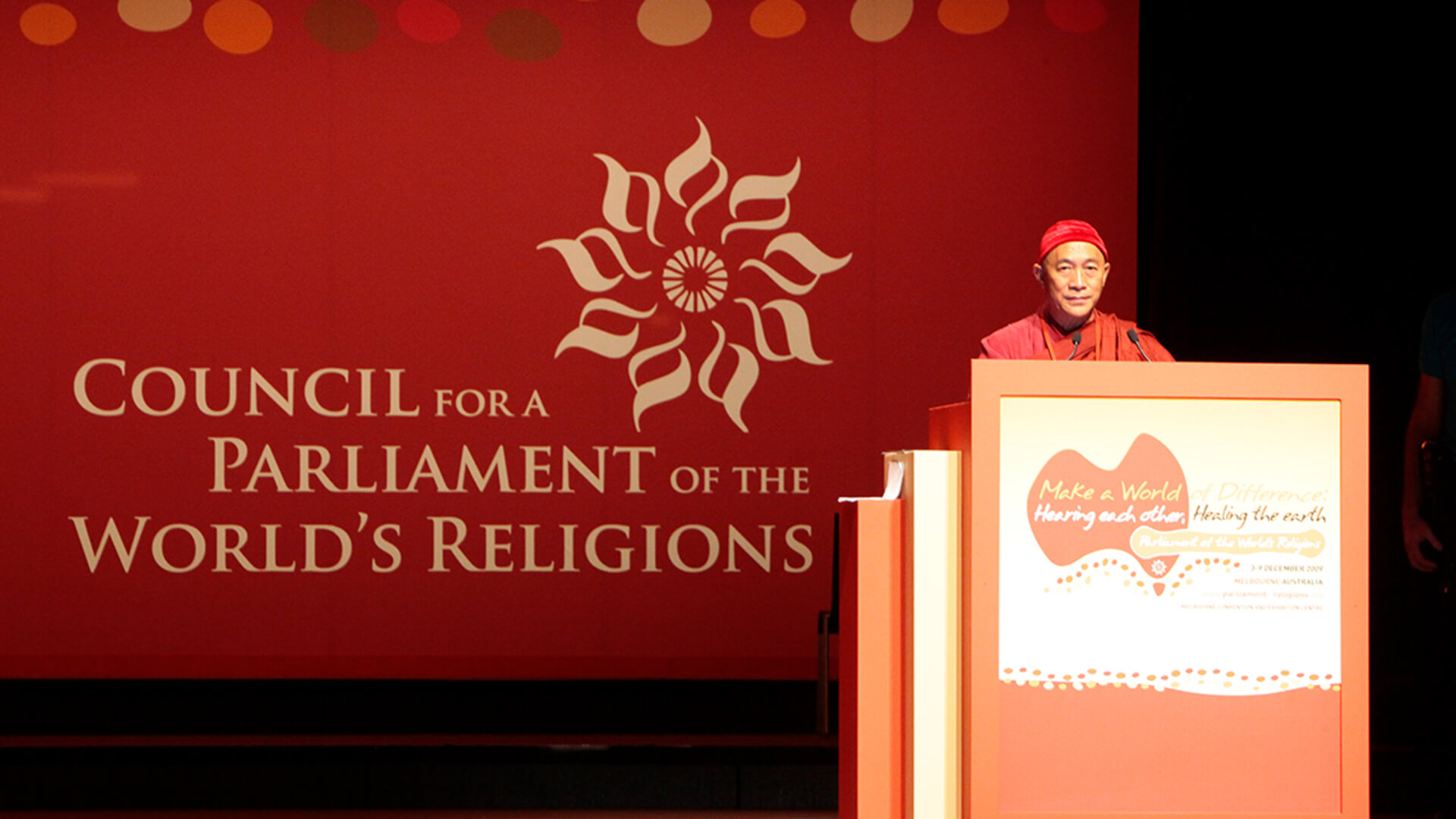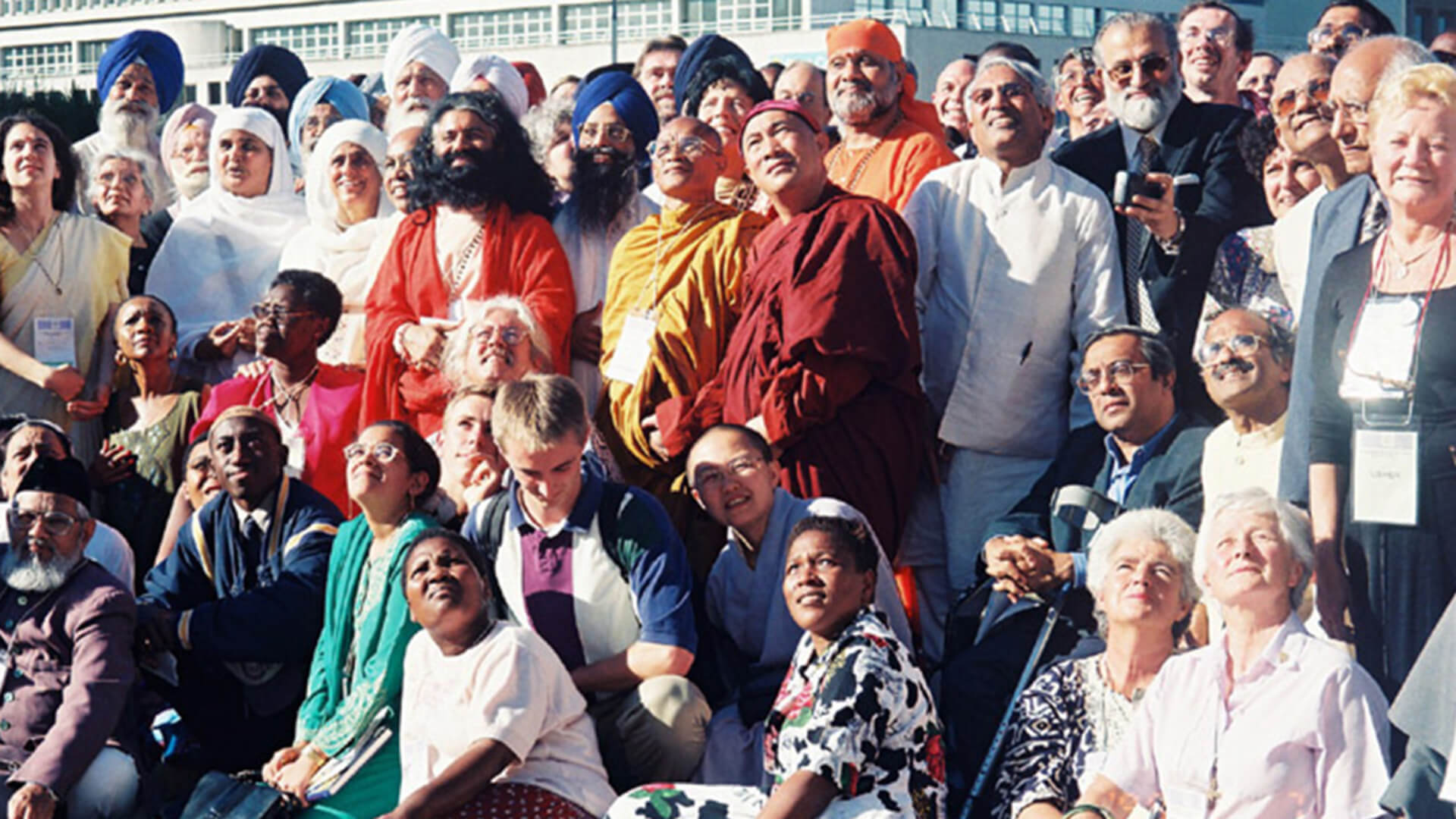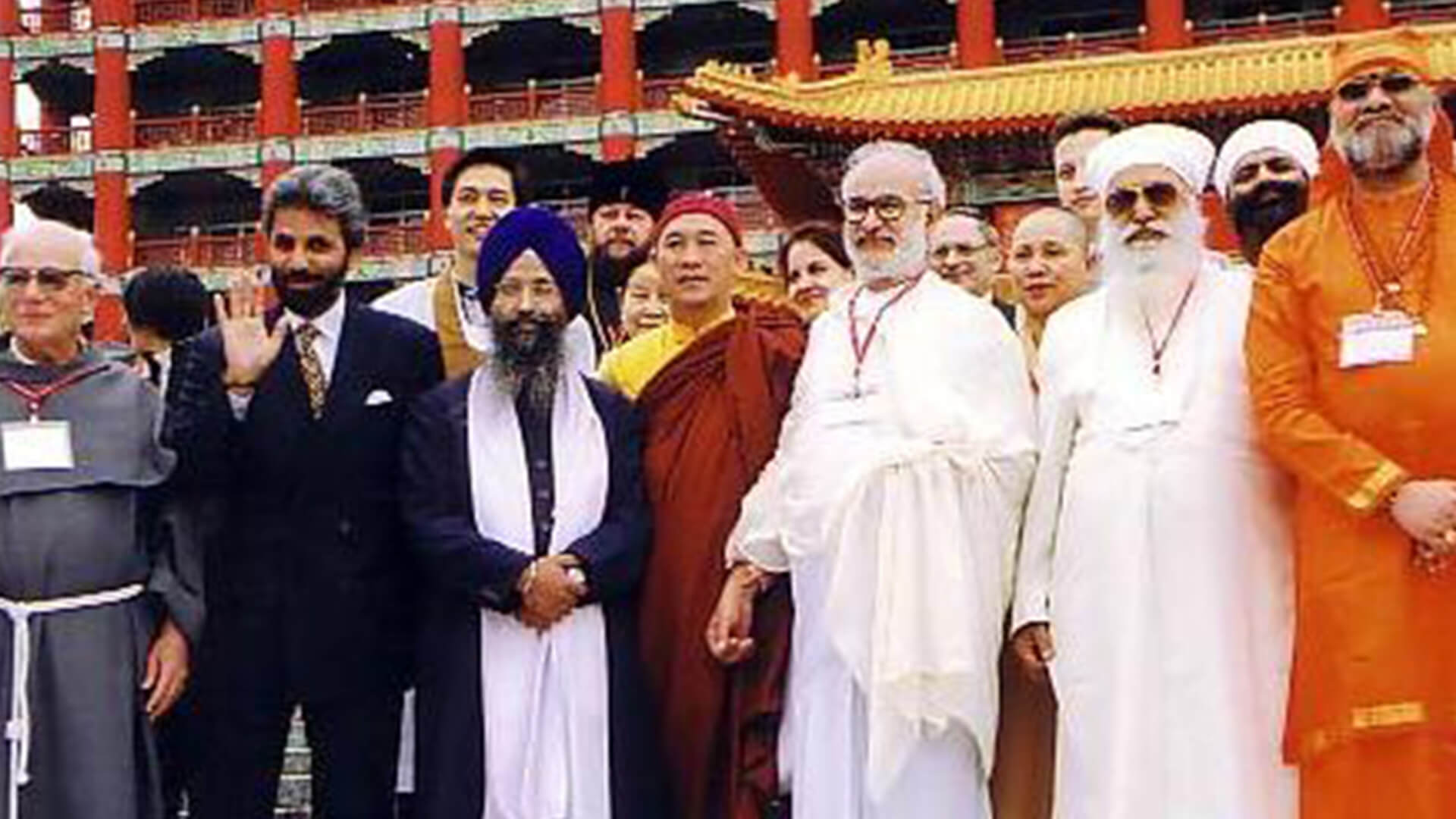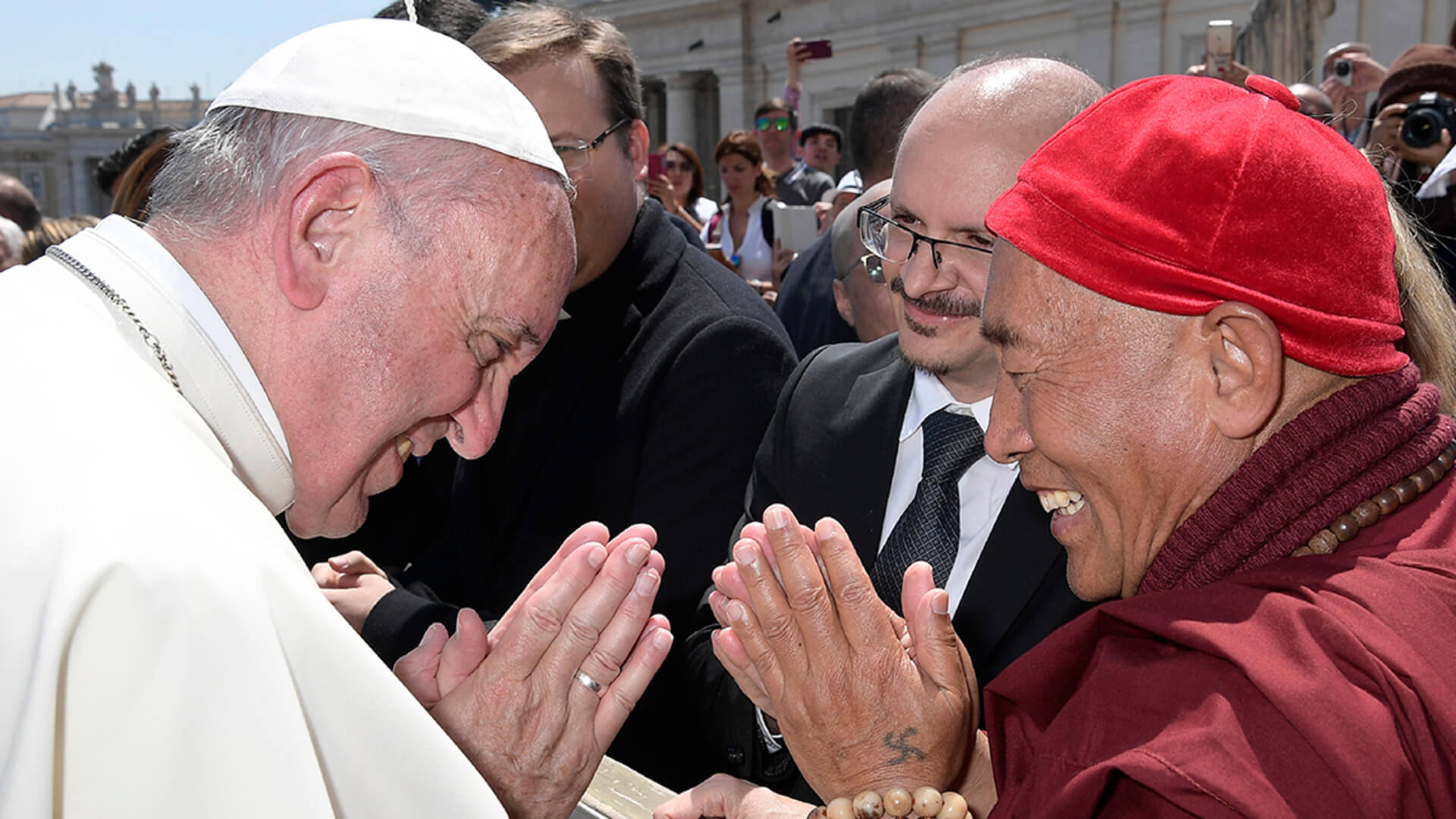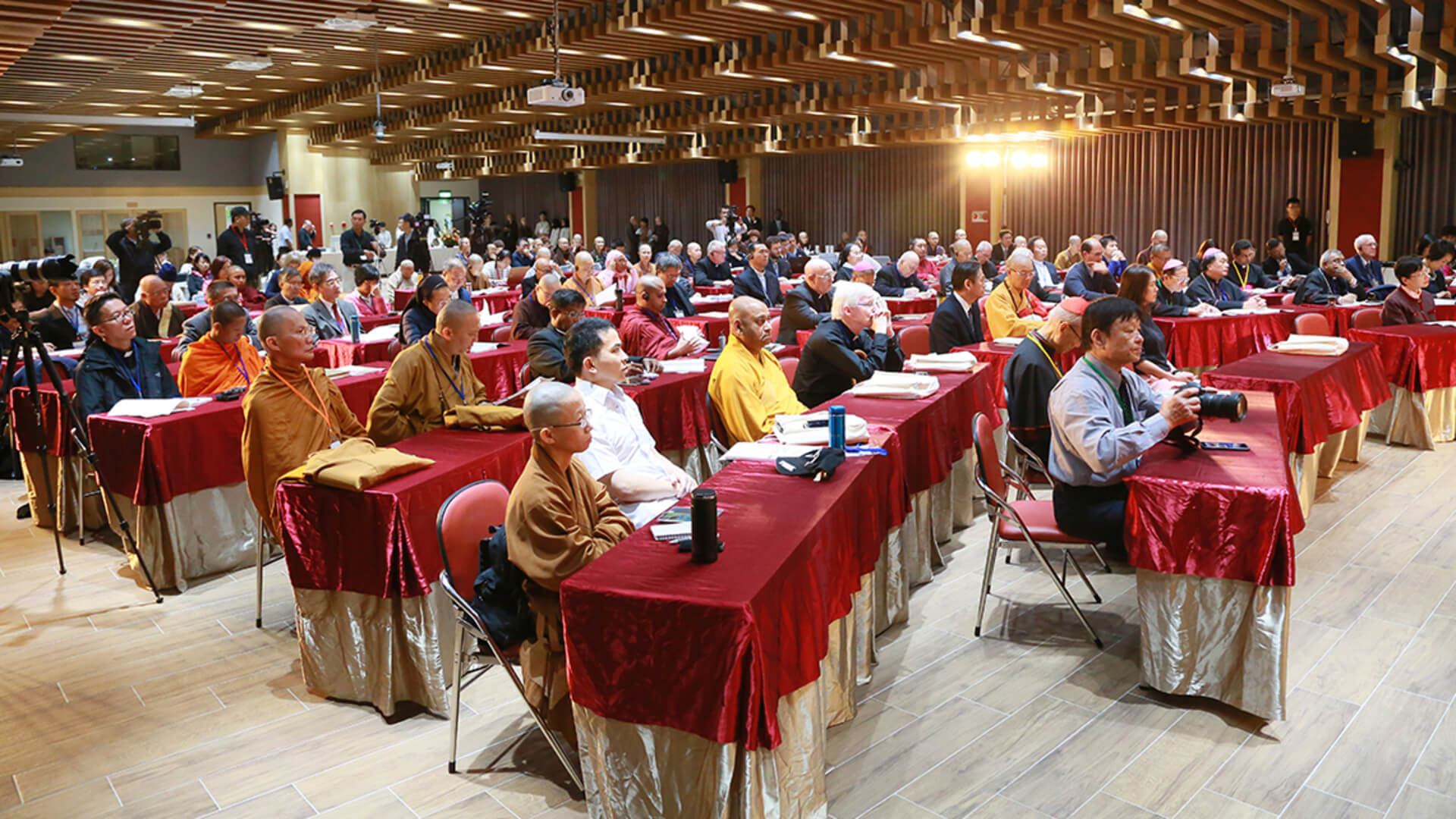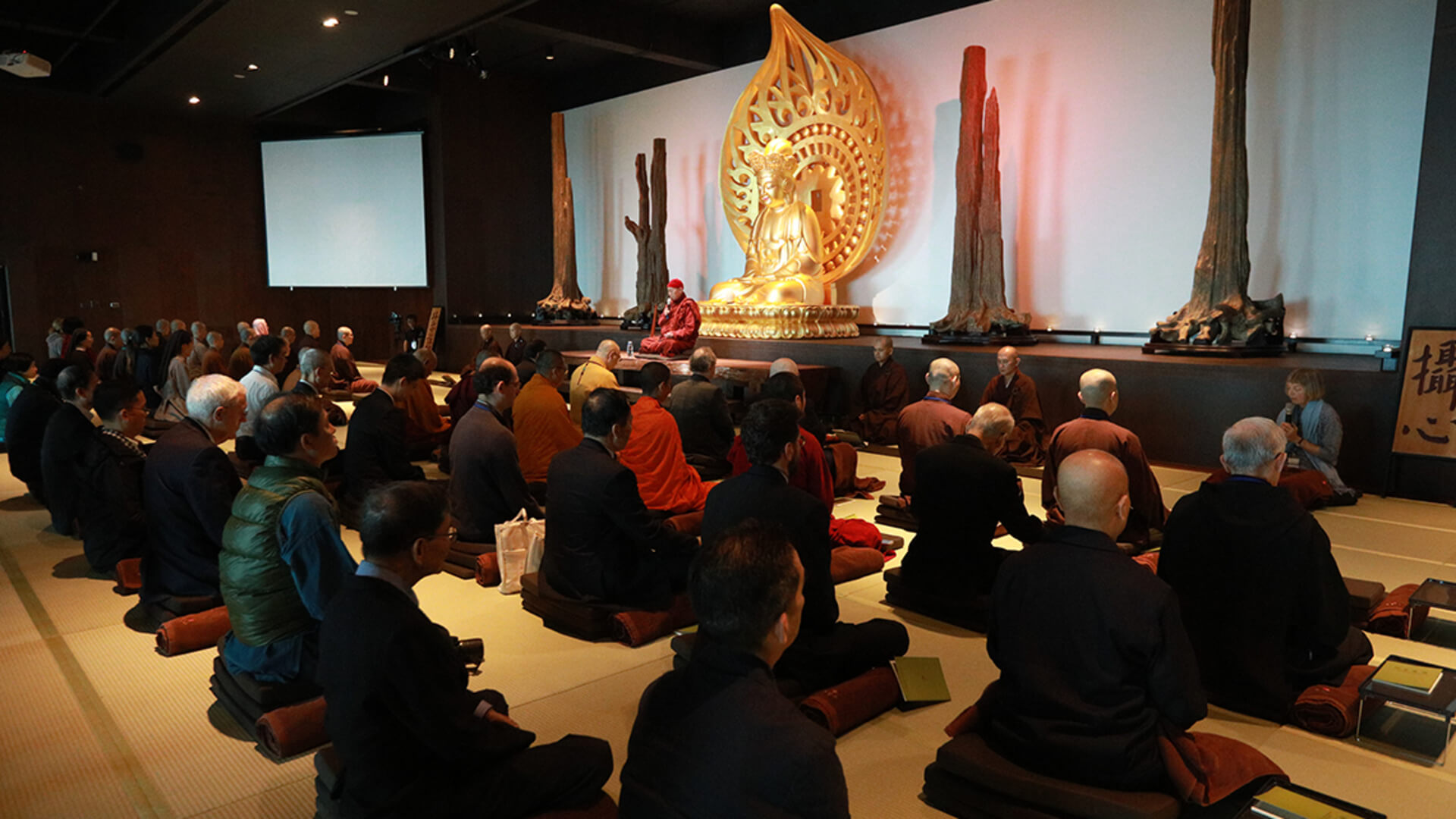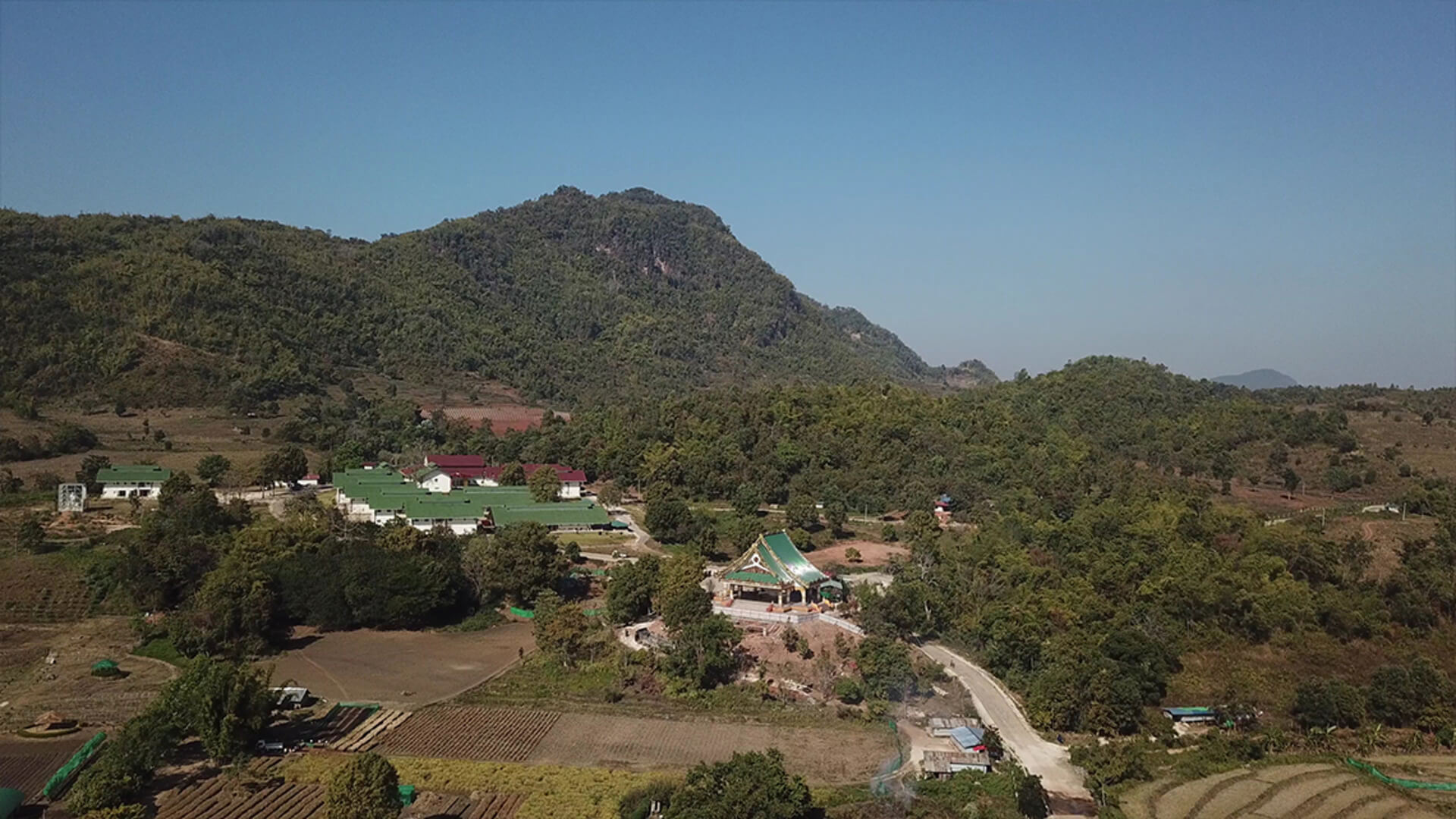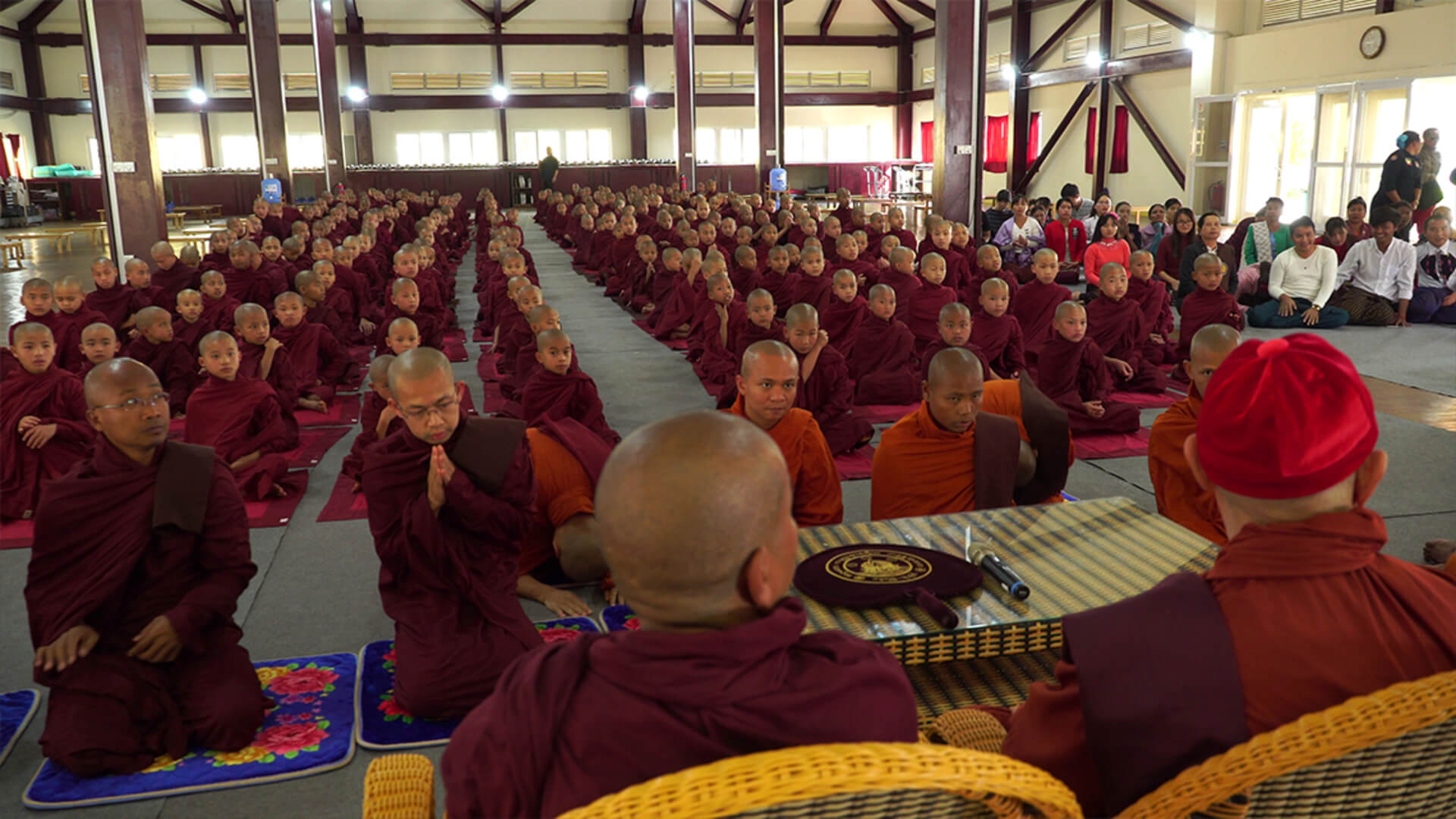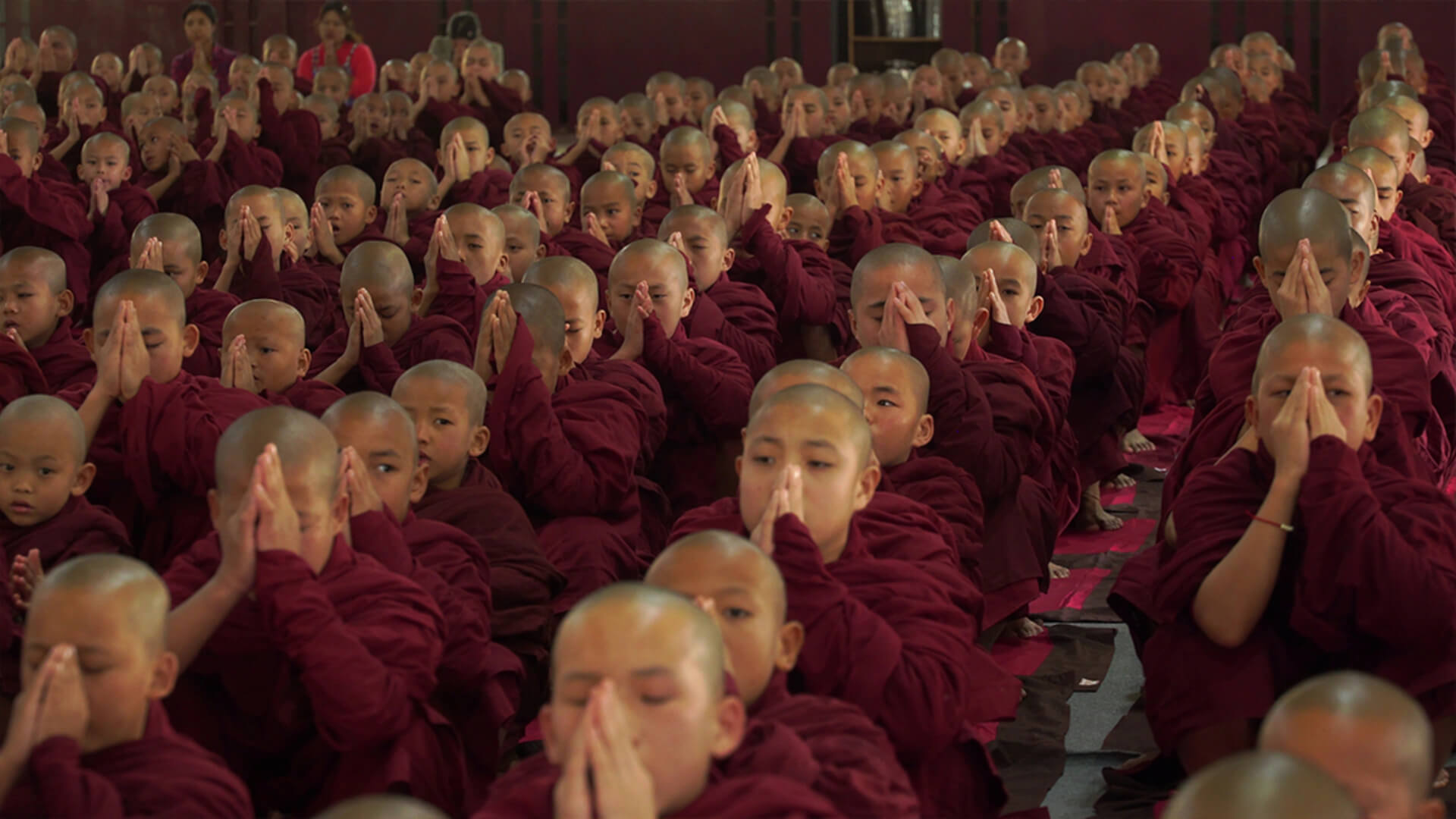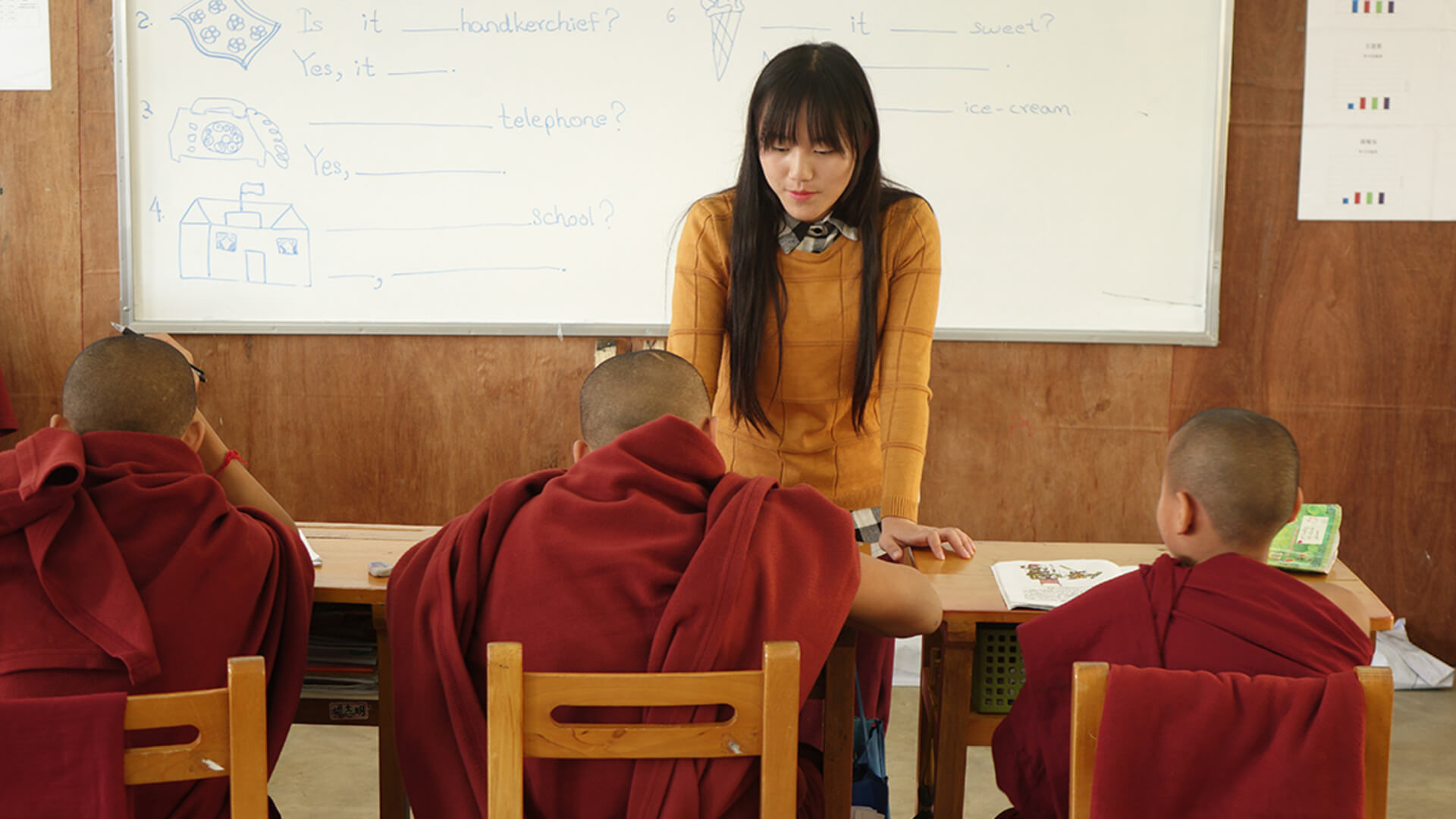Founding Abbot of the Ling Jiou Mountain, Dharma Master Hsin Tao, was an orphan from the war-torn Myanmar where he lost his parents early on. As a child soldier, he repatriated to Taiwan with the Solitary Army, and the army doctor once told him about the proper way to refer to Guan Yin, the sheer name stroke a chord in his heart and drew tears to his eyes. That’s when Master Hsin Tao as a young man began to learn to recite the Mahakaruna Dharani(Great Compassion Mantra) and embarked on the journey of the quest in search of the meaning of life. From his Burmese buddy he further learned about stories of Guan Yin that collectively reflect the paraphrases commonly used to describe the venerated Bodhisattva - ‘Prayers depart a thousand hearts; in a thousand hearts he answers. At all times he is a boat that crosses people over the sea of suffering.’ The young man was so impressed and touched that he pledged a vow to learn the teachings of Guan Yin and to dedicate himself to the Bodhisattva in the footstep of giving help upon hearing outcries for rescue out of the great compassion.
The ‘Avalokitesvara vikurvana nirdesah’ - Chapter 25 ‘Universal Door’ of the Lotus Sutra - was the very first Buddhist scripture Master Hsin Tao ever received, and the anecdotes of Guan Yin moved him so much, that he did what many monks in Myanmar do - by tattooing verses of scripture on their body. ‘I shall never rest until the attainment of the perfect enlightenment’ onto his left arm, ‘Realizing one’s Buddha Nature as the supreme offering to Guan Yin’ on his right arm, ‘Liberating sentient beings by entering Tathagatagarbha’ on his abdomen, and the Buddhist symbol of「卍」on the back of both his hands, to pledge and commit himself to the way of Guan Yin, as well as his determination to go the distance in studying, practicing, and testifying to Buddhism. He chose to take the vow of monkhood and have his head clean-shaven as part of the ordination on the day when Guan Yin was recorded as becoming a monastic. Ten-plus years followed and Master Hsin Tao was able to complete his amazing achievement in conducting ascetic practice in cemeteries for a decade, and solitary meditation and fasting for two years among others. Then, in 1984 and on the anniversary when Guan Yin attained enlightenment, the Wu Sheng Monastery of the Ling Jiou Mountain was officially opened.
The approach of Guan Yin to Dharma has been the focus of the Ling Jiou Mountain in studying Buddhism. Dharma Master Hsin Tao, ever since the opening of the LJM monasteries, has been leading his disciples (the Four Varga, ie monks, nuns, devotees male and female) in practicing Dharma teachings of Guan Yin’s as well as by putting what is learned to daily life in ways Guan Yin taught. The many ways Guan Yin approached enlightenment as passed on by Dharma Master Hsin Tao include the daily chanting of the Mahakaruna Dharani, Practice of Peace meditation, dedication of the Great Compassion to all sentient beings, daily inward reflection in search of the prajna, the monthly class of million chants of the Mahakaruna Dharani by followers at all LJM outposts, and the Dharma function to offer alms in the name of Guan Yin of the Great Compassion, the quarterly practice of offering merits of the Mahakaruna Dharani hundreds of times by Master Hsin Tao in solitary retreat, the annual ‘million chants of the Mahakaruna Dharani’ over 21 days with followers in retreat, and the annual Waterland Dharma ritual (Shui Lu Mahapuja) for the Liberation Rites, etc. LJM collects all the merits thus garnered via the Guan Yin tradition of Dharma practicing and dedicate them to all the sentient beings as part of its unfailing effort in contributing to the harmony of the society and the safety and security of the Earth.
With the blessings of the Great Compassion of Guan Yin, good karma gather and the LJM formed numerous voluntary groups to help promote causes and execute projects that led to the ever-popular Waterland Dharma Ritual of the Liberation Rites, the Museum of World Religions, other charitable and not-for-profit enterprises that forever abide by the Guan Yin ways of doing things, and already for decades sending the prescription of love and peace for hearts suffering wherever they may be.
There are quite a few forms of manifestation of Avalokitesvara Bodhisattva , including the Tara Guan Yin, the Eleven-Faced Guan Yin, the PiLu Maha-Vairocana Guan Yin, the Thousand-armed/-eyed Guan Yin, and the 108 Lokesvaras. Collectively, they symbolize the ever-lasting protection for all sentient beings. They also represent the wish that everyone would learn to emulate the spirit of Guan Yin and become a manifestation of Guan Yin to spread compassion and love and promote world peace and stability.
Episode 1: Prelude - Origin of the 108 Lokesvaras
Episode 2: Dharma lost to the world
Episode 3: The Origin of Buddhism in Nepal
Episode 4: The Origin of the 108 Lokesvaras in Nepal
Episode 5: Representations for Inheritance & Revitalization
Avalokitesvara Trailer - Yearning for Dharma - The Origin of the 108 Lokeśvara
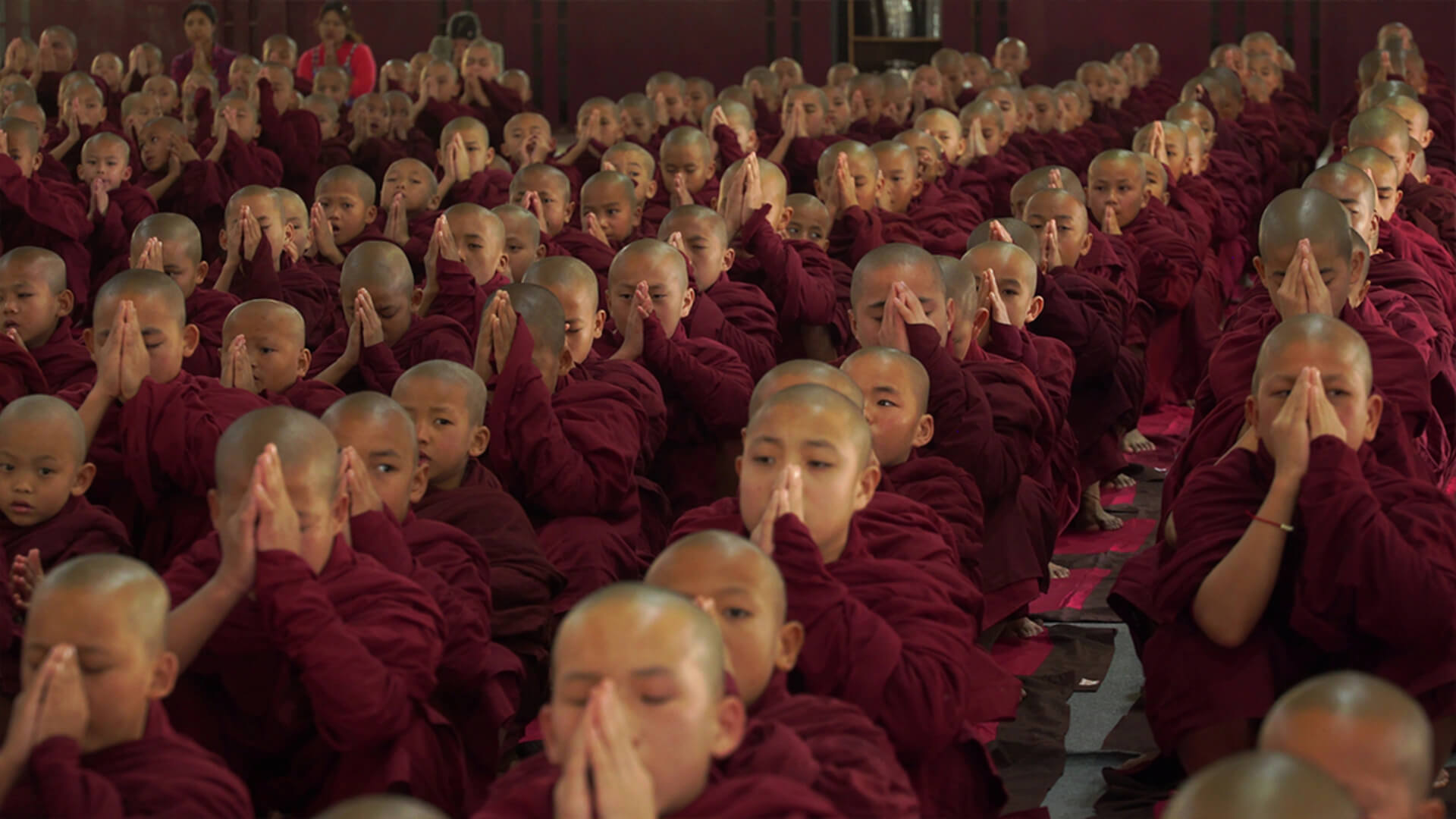
Guan Yin’s Vow of Compassion and the University for Life and Peace
Touched to the core of his very existence by Guan Yin and armed with the spirit of compassion to spearhead a series of compassion-centric endeavors operated by the Ling Jiou Mountain Buddhist Society, Dharma Master Hsin Tao initiated the Mahakaruna Dharani Retreat and called out to all his disciples to join and chant the Mahakaruna Dharani million times per retreat in its many available package arrangement for participation. These, in turn, expand to render the ‘Great Compassion for the Cosmos’ series accessible to the general public, in the hope that group synergy will benefit all participants in their individual attainment of the wisdom of compassion and that the merit of their collective mindfulness will eventually bridge Guan Yin’s great vow of liberation to ultimately help eradicate potential hazards for the Earth to keep everyone sound and safe by virtue of a sustainable ecology.
Dharma Master Hsin Tao has been studying and chanting the Mahakaruna Dharani long-term and the count goes beyond at least 2,000 times everyday whenever the Master goes into retreat. Master Hsin Tao says that ‘reciting the mantra helps increase our good karma and fortune and improve our inter-person chemistry while keeping disasters at bay. Especially because we recite the mantra to benefit sentient beings and not for our own sake. To chant the mantra is like to sow seeds of peace and to pass the seeds on and contain calamities to afford stability for everyone’s life. We promote the mantra non-stop and there are more and more people who now recite the mantra regularly. Increasingly we are reassured that once our mind is at peace, the world is at peace.’
A brief recap of the Ling Jiou Mountain history will highlight Master Hsin Tao’s endeavors over the decades. The LJM was officially opened in 1984 and the Master kick-started his globe-trotting to promote interfaith exchange with the focus on love and compassion for the world. And with the launch of the Museum of World Religions (MWR) in 2001 to spread its core value of a ‘global family of life communities’ and reinforce interreligious harmony for the idea of a ‘worldwide family of love and peace’. The MWR conducts an annual congregation of interfaith prayers for blessings to kickstart every new year and curates special exhibitions for the public to learn about the characteristics of different religions by way of art towards appreciating the underlying interfaith commonality of the great good. The MWR has proven to be a positive platform to display religious diversities while promoting dialogue, exchange, and co-operation for better understanding.
To extend and expand the MWR core values of ‘respect for all faiths, tolerance for all cultures, and love for all life’, Dharma Master Hsin Tao and the LJM Buddhist Society have been focusing on the making of yet another precious legacy and gift to the world - the University for Life and Peace. Located in Myanmar, the base for the planned University will see well-integrated a comprehensive education system fit to breed and cultivate future seeds and talents capable of interfaith peace. Under the banner of the future University, the project will take care of orphans via adoption, and it will promote zero-toxic organic farming in addition to other tasks of charity, medicine, and education to help advance harmony among the ethnically diversified local community. There is also the plan to erect a center for ethnic culture and religion to further manifest the idea of ‘Loving the Earth / Loving Peace’.
Master Hsin Tao’s now famous quote ‘when the mind is at peace, the world is at peace’, as set side by side to his long-time dedication to promoting ‘Loving the Earth / Loving Peace’, makes it amply evident that the essence of Dharma is to find peace with ourselves, with other people, with Nature, and with the Universe. It echoes nicely where the world is going with the quest for environmental protection, and it is hoped that we can join forces to enhance the power of our synchronized resonance in healing wounds by war, hatred, and violence. Let us restore our body and mind, and render it possible for the heart to return to its original self and contribute to transcending conflicts and securing a safe world.
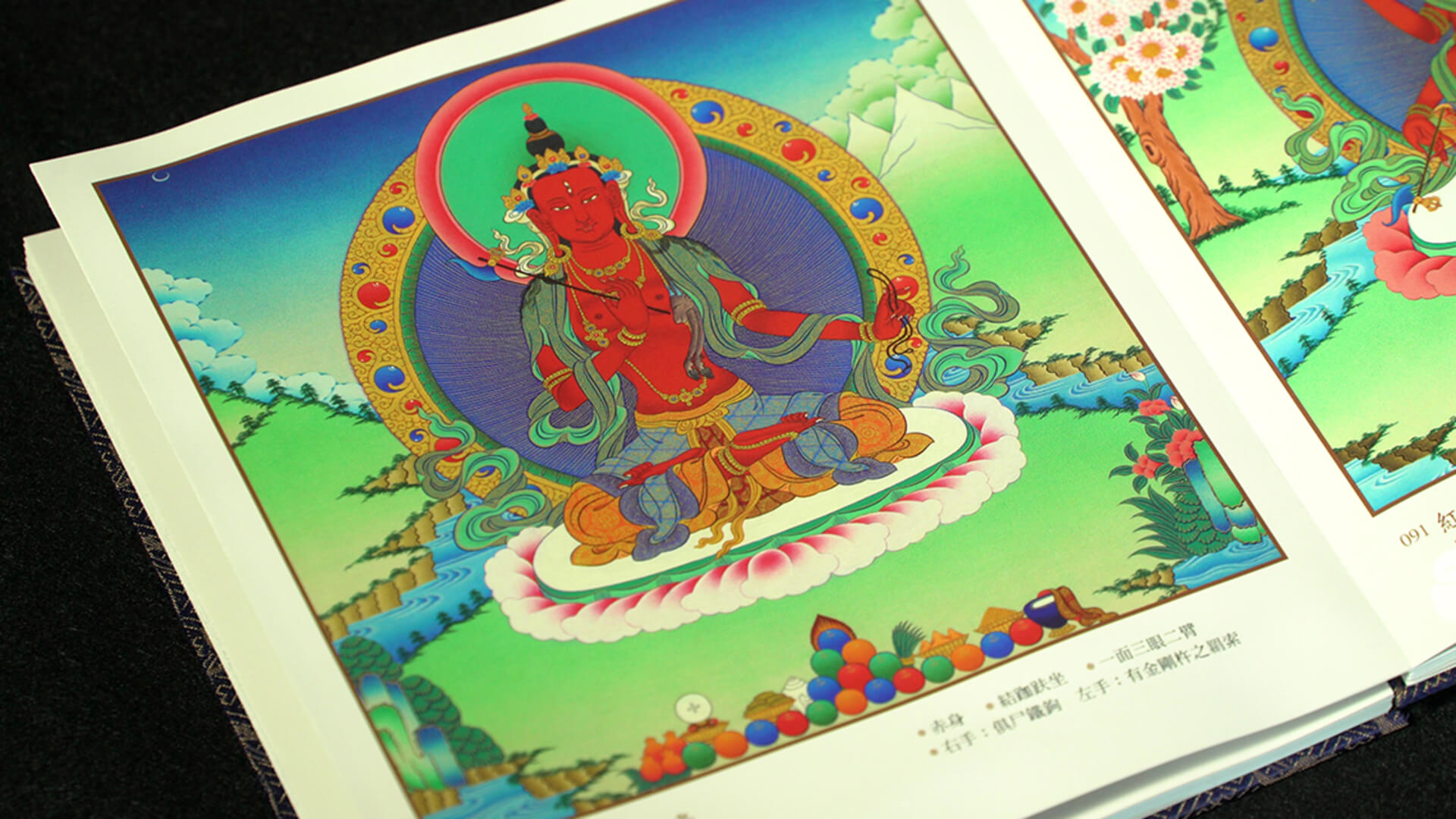
Reproductions - Thang-ga Paintings and Copper Sculptures
The religious practice of the LJM focuses primarily on the Guan Yin tradition of practicing Dharma, and Dharma Master Hsin Tao refers to himself in humility as a ‘servant of Guan Yin’. Guan Yin is ubiquitous in LJM and it is small wonder that the decision was unanimous to track down the origin and all things relevant to the 108 Lokesvaras which had been chanced upon unexpectedly some ten years back.
At the beginning of our research on the subject, we realized that there is a scarcity of literature or even information on the topic of the 108 Lokesvaras. The lack of references in Chinese was little and very challenging. Japanese abbot Hidenobu Takaoka and his tracing book for drawing practice of the images of the 108 Lokesvaras was practically our only clue. Young Japanese scholar Hidenobu Takaoka went to Nepal for academic research in the 1970’s and spent a couple of years on field studies working on the 108 Lokesvaras. The tracing book for practice of drawing the images of the Lokesvaras was his publication.
Upon realizing that the 108 Lokesvaras could be traced back to the temple where they have always been, the LJM Buddhist Society dispatched numerous groups in succession for field trips and on-site studies. An aerial view from above renders the unique temple like a three-dimensional mandala, and there is a white statue of Avalokitesvara Bodhisattva (Seto Machhendranath) for worshiping in the main hall, and on the walls of the main hall are the 108 splendid forms of Lokesvaras in either bronze sculpture in bas-relief or in colorful Thang-ga paintings. There was a major earthquake in 2015 that took heavy tolls on Nepal with a lot of casualties and destructions. The temple with the 108 Lokesvaras was spared thanks to the protection and blessings by the deities.
Meanwhile, Dharma teachers were exhausting the Tripitaka in both Mahayana and Vajrayana and other relevant data sets and compilations in search of relevance to the 108 Lokesvaras. Their relentless efforts finally produced some result, in that the Grand HwaYen Temple published a print of two Thang-ga paintings featuring the (108) Lokesvaras. The two Thang-ga paintings, however, show a distinctive style that is neither Mahayana nor Vajrayana, but Nepali. That piece of information plus feedback from our on-ground task force in Nepal, our quest in tracking down the origin of the 108 Lokesvaras was beginning to see light at the far end of the tunnel.
The Dharma lineage of Guan Yin is the root cause of Ling Jiou Mountain and the never-ending source of our inheritance. Therefore, the LJM Buddhist Society formally engaged Taiwan’s reputable master artisan LIN Jian-Cheng and Kun-Shan Che-Pei Lama to reproduce one full set of red copper sculptures and another set in Thang-ga paintings respectively. Years passed and now the red copper sculptures of the 108 Lokesvaras have been enshrined at the LJM Sheng Shan Temple, while a color album featuring the 108 Lokesvaras in Thang-ga paintings has been scheduled to come off the press in 2018.
Why two different sets then, one may ask - Thang-ga paintings and red coppoer sculptures painted in colors. The point being: the spreading of faith and culture can hardly be separated from the dissimination of art. Thang-ga painting as an art form has been around long enough for people to be generally familiar with it. And as such, it does indeed have its own rather unique cultural contents and aesthetics. Red copper sculptures painted in colors is, by contrast, a relatively young art form of presentation. The 108 Lokesvaras in red copper are enshrined at the LJM Sheng Shan Temple near the coast at Taiwan’s northeastern tip of the island with exceedingly high humidity from salty sea water. Red copper painted in colors can better withstand the test of time under the given circumstances and its durability can allow more people to visit and marvel at the art while learning about the background of the 108 Lokesvaras. We hope that more mindfulness will be garnered to resonate with the great compassion for positive energy.
We started out from scratches in our search and quest for more understanding of the 108 Lokesvaras, and we have come a long way in having completed two sets of rare and precious art over the span of almost a decade. Now the 108 Lokesvaras of red copper sculpture and of Thang-ga painting respectively are the world’s to appreciate and enjoy. Dharma Master Hsin Tao is hopeful that we would understand to better appreciate the rare fortune in paying homage to the 108 Lokesvaras, and to discern the limit- and boundary-less vastness of Guan Yin’s compassion and learn to appreciate the power of the great vow of the compassion.


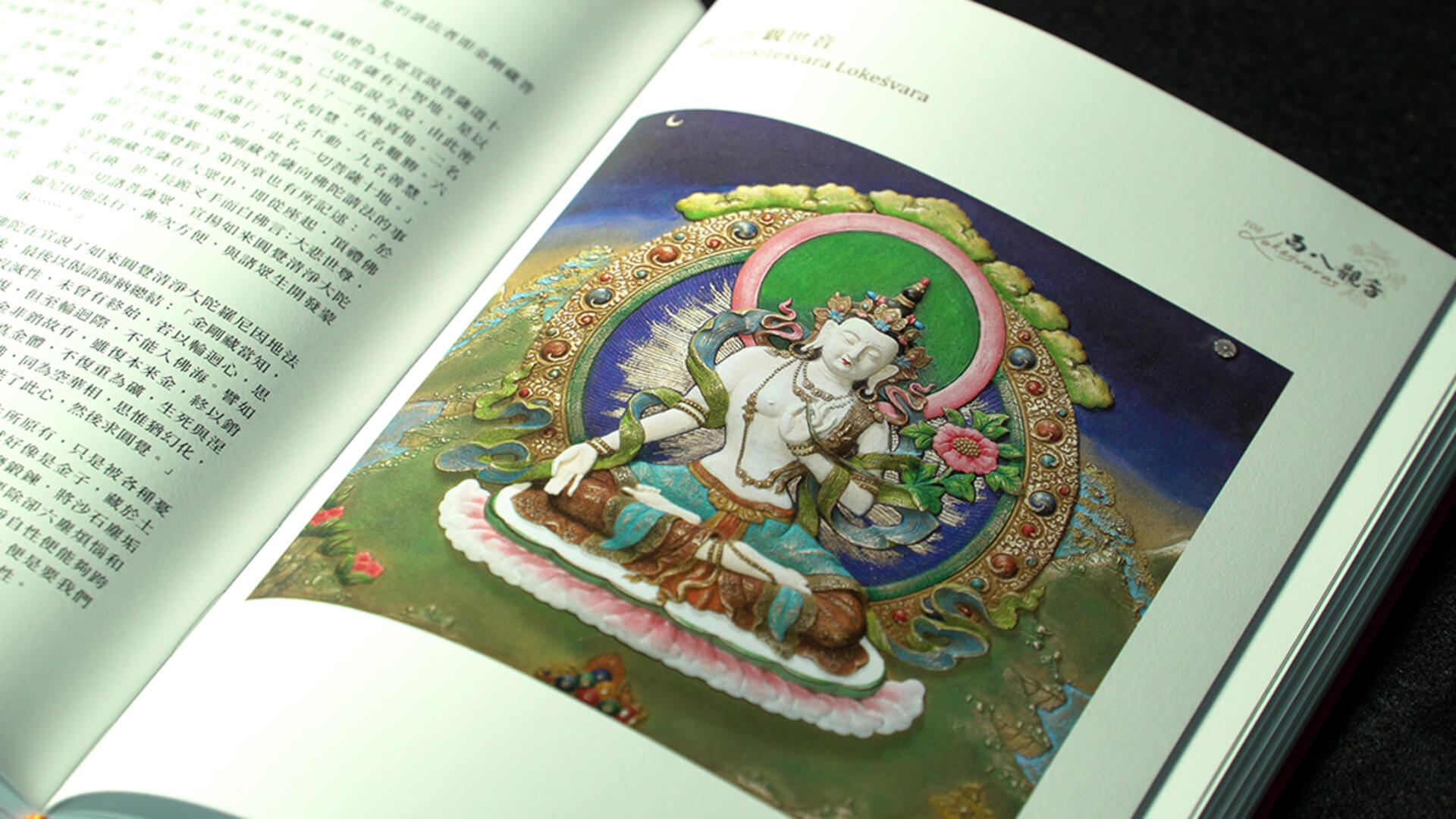
Reproduction of the 108 Lokesvaras in Thang-ga Paintings by Kun San Che Pei Lama
Kun Shan Che Pei Lama began his apprenticeship in Thang-ga paintings at 17 for more than 30 years now. He said that he creates Thang-ga paintings to benefit the general public by offering drawings of representation to facilitate practice of contemplation.
The most important rule for Thang-ga paintings are to follow prescribed ritual procedures as dictated by the classic Buddhist scriptures. It was a first-time experience for Kun Shang Che Pei Lama to create paintings in the Thang-ga style for the 108 forms of Avalokitesvara by commission of LJM. The process was for the Lama to finish the drawings in Taiwan first, then send these to Nepal for colors to be filled in and out by his students. It took more than two years to complete the commissioned task.
Kun Shan Che Pei Lama said that proportions and scale are essential to Thang-ga paintings. Get those right, then you focus on the facial features, and the hands and feet need to be drawn to evoke a sense of solemnity. And the eyes, they are the most challenging part. If there is even the slightest bit you can get picky with how the eyes were done, it would not matter anymore how well all the rest has been done.
Kun Shan Che Pei Lama also told of the following story. There was once this old lady who for the longest time had always wished for a Buddha’s tooth relic to be the centerpiece of her family altar. Everytime her son would be reminded of this when he went out for business, but he just would not remember to comply. Finally one day the old lady threatened to take her own life if her wish failed to be fulfilled one more time.
But, alas, the son did not remember and only thought of the old lady’s threat shortly before he almost got home. There happened to be a dead dog by the roadside and out of despair he took a tooth from the corpse and wrapped it in cloth to take home with. The tooth was given to the old lady and a lie was told for a cover-up. The old lady was overjoyed and started saying her daily prayers to the tooth.
Although the tooth belonged to a dog, the intent and the prayers on the part of the old lady were real, sincere, and out of the bottom of her heart. Worshiping a false object, however, did little to demerit her virtues and wholesome karma. When the old lady passed away, a bright rainbow appeared to wrap around her body to indicate that she had attained perfection after all.
Every Thang-ga painting embodies a Buddha and whether it is true or false is in effect a non-issue. Can you believe it if I tell you that we ourselves are but delusions. The point of departure lies with the heart and whether the heart is sincere and if it believes. The Thang-ga paintings can be so well and impeccably executed, but they are to no avail and useless to you if your heart is not sincere and does not believe. When we try to learn the way of the Buddha, what matters most is the heart.

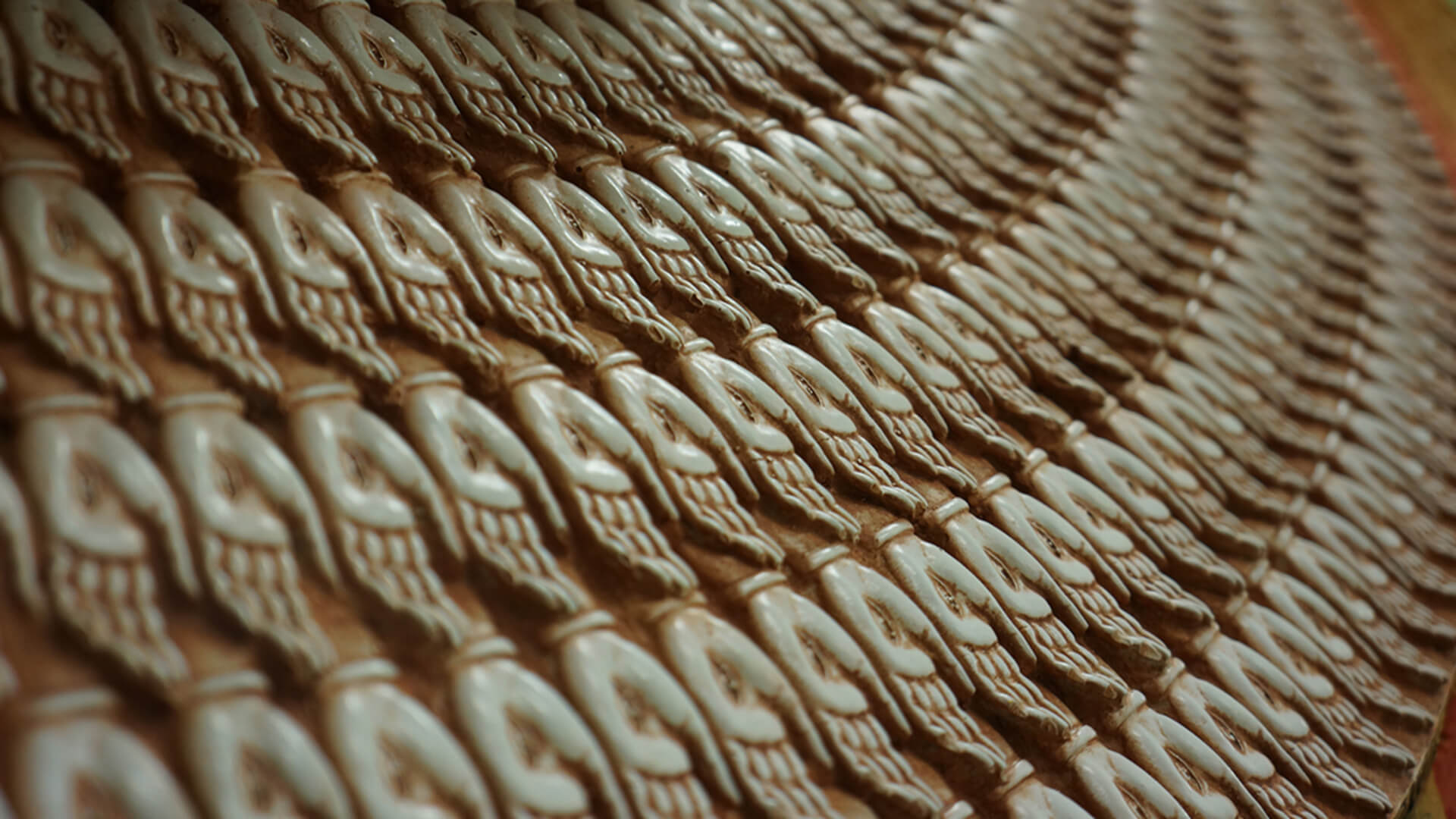
The ‘unprecedented’ 108 Lokesvaras in red copper with color paint
Maestro sculptor LIN Jian-Cheng first connected when he was commissioned to build models to scale of the world’s ‘Top 10 Religious Architecture’ for the museum of World religions , which project he completed with flying colors. Lin was further commissioned to build models for the Tower of the Buddha, the Grand Golden Tower, etc., and in 2014 he was assigned by Dharma Master Hsin Tao to create the ‘unprecedented’ 108 forms of Lokesvaras in red copper painted in colors.
What justifies the use of the term ‘unprecedented’ in describing Lin’s work on the 108 Lokesvaras? Basically the Lokesvaras are all of a petite size, some are even quite small with head the size of an adult’s thumb. Yet facial features nonetheless require execution to the last details. It’s like miniature carving -- you need to hold the breath to keep the hands and fingers steady for the minute details. But on the whole and in terms of Buddhist sculptures, mainstream is so named for good reasons. LIN said, I was contemplating innovative ways to break away from the tradition. We went for red copper for the base material, to begin with, then we went for more creativity in presentation and other elements that are contemporary.
But innovations come with challenges hard to harness, and Lin encountered many technical challenges while working on the project. First and foremost, the mold-casting turned out to be quite tough, as Lin started with clay to fashion the figurines in bas-relief. But thin layers of clay dry up quickly and they would then need to be peeled off to start over again. “We decided to opt for another way and used reinforced steel to address the issue and tackle the challenge successfully. Our second challenge is to let the base material reveal itself from under the color paint, which runs contra to the tradition. It took a lot of time and I kept on trying different ways to let visitors and viewers see the color of the red copper beneath the paint.”
Master Lin showed us a piece he was working on and said, ‘take this one for example and you see that white paint would be opaque and block the color of red copper beneath. I then thought of using mineral color. I smelt the ores in a kiln at 1200 degrees Celsius, grind it down to fine powder and apply it. The color is mineral and does not fade over time.’ Actually that is also Lin’s secret recipe when producing wax figures and Lin claims that only his wax figures retain bright colors without fading because he uses mineral colors. In the case in point, the colors need to be applied in thin layers one atop the other, but the time-consuming way does reveal the color of the base material in red copper. “I believe our way is unprecedented, but not sure whether others would try it as well,’ said Lin half jokingly, half seriously.
“Don’t worry about the work, but do worry about not doing it properly” is Lin’s motto, which helped Lin and his team through to complete the commissioned task of the 108 Lokesvaras that required two to three times as much time as originally estimated. The set of the 108 Lokesvaras in red copper are works of fine art and invaluable treasures of faith and culture blended in art. Having their own very special place at the LJM Sheng Shan Temple, the Lokesvaras await visitors to admire and appreciate while worshiping Guan Yin and the great compassion.

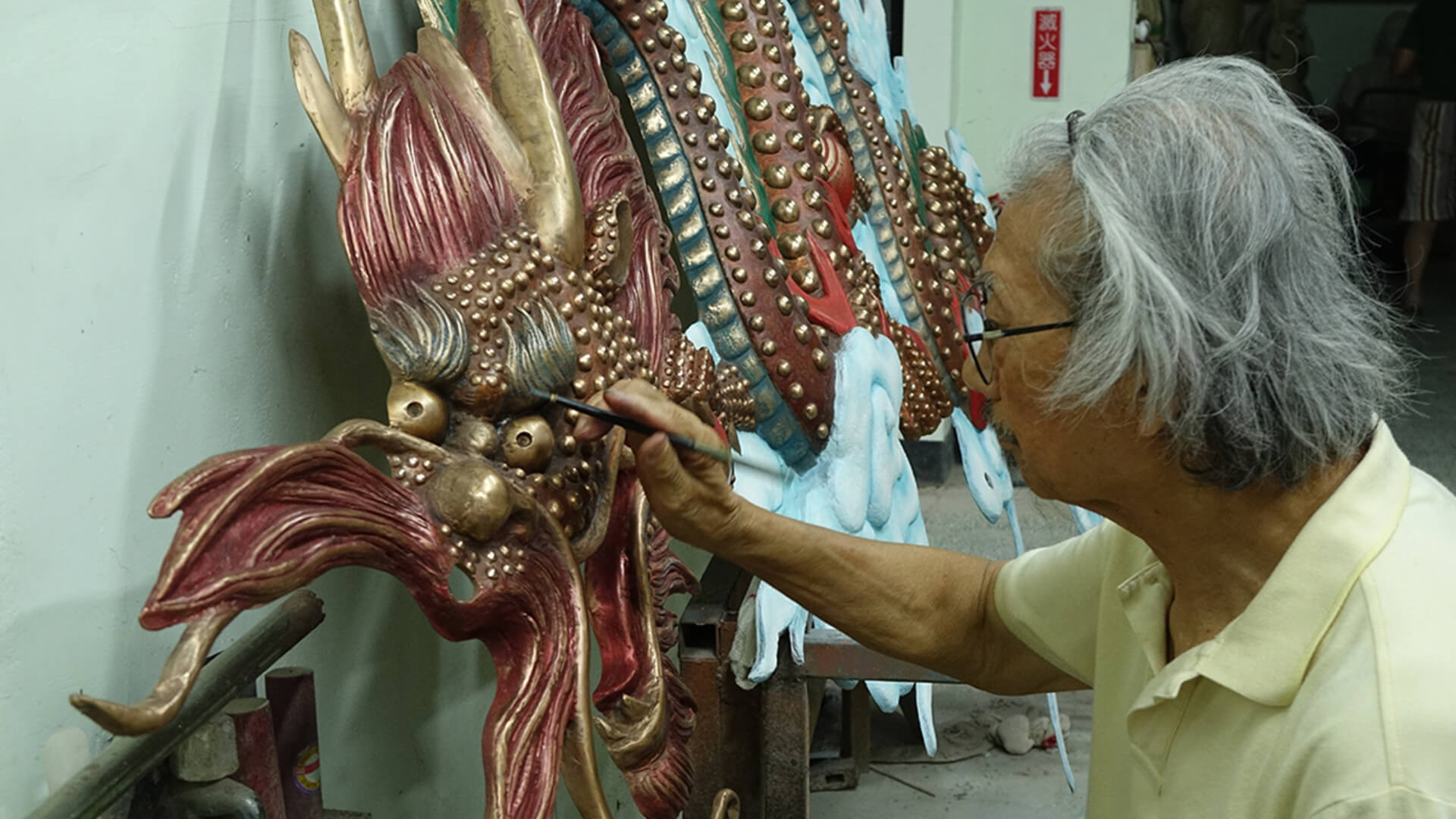
To go for the ‘re-set’ Button in Life: Creative Phases of Maestro Sculptor LIN Jian-Cheng
Maestro LIN Jian-Cheng is celebrated for his sculpture, and he was known some 3, 4 decades ago for quality wax figures the world over. His works could be seen in museums not only in Taiwan but in countries including the US, Canada, the UK, Belgium, New Zealand, Japan, Korea, etc.
Lin has always been almost notoriously serious about his creative work. From early on, his many interests drove him to take up painting, Chinese opera, martial art, even ballet and tap-dancing. He was also once a promising athlete. But when he fell in love with wax figures, it felt like it was a calling and he responded to it with zest and his other skills from prior experiences somehow blended to come in handy. Because to make wax figures one is required to be in his elements with metal, wood, water, fire, and earth, and Lin was quite OK with that.
“I am excited about tough challenges, and I prefer trying what others fail to accomplish. Basically, it does little to entice me to do what others can do,” there is not a trace of arrogance when maestro Lin made the claim. Flatly
“Treat every piece of your work as art when you begin” best describes his mindset towards creative work. “I treated my wax figures as artworks and not commercial commodities and there were no copies out there. The several copies were all kept at my studio.” He turned down all requests from overseas to make more wax figures, or reproduce the architectural models to scale for the world’s top 10 religious buildings.
“My mind is in fact rather simplistic and I often say to my team that we only strive for the very best. We go after projects that are challenging and we leave the simple tasks to others.”
From wax figures to copper sculptures the way to creative work for Lin did not change much in terms of the state of mind, although the two categories differ in material as well as in the approach how it’s done. But what about the difference between crafting images of people and creating those of Buddhist deities? Lin said that ‘it’s a world of difference as they are worlds apart. For people’s images, it takes a good artisan who can handle ‘likeness’ or resemblance. But for the Buddhist images, it requires an artist with mindfulness and a peaceful heart to be able to transplant the feel of compassion with a touch of authenticity.”
There is a saying that goes ‘focusing on the flow of air in the body brings out the softness in one, and it is possible to practice meditation by way of art’. Always intensely focused on his work, maestro Lin was literally practicing Chan and meditation during his work. Upon completing the set of the 108 Lokesvaras which he held dear to his heart and regarded as his ‘life’s work’, the maestro passed away on January 5, 2018, at the age of 80. His wonderful legacy will forever display art’s truth, goodness, and beauty, as well as the true spirit of any serious artist that one should fear no hardship and always improve on betterment.

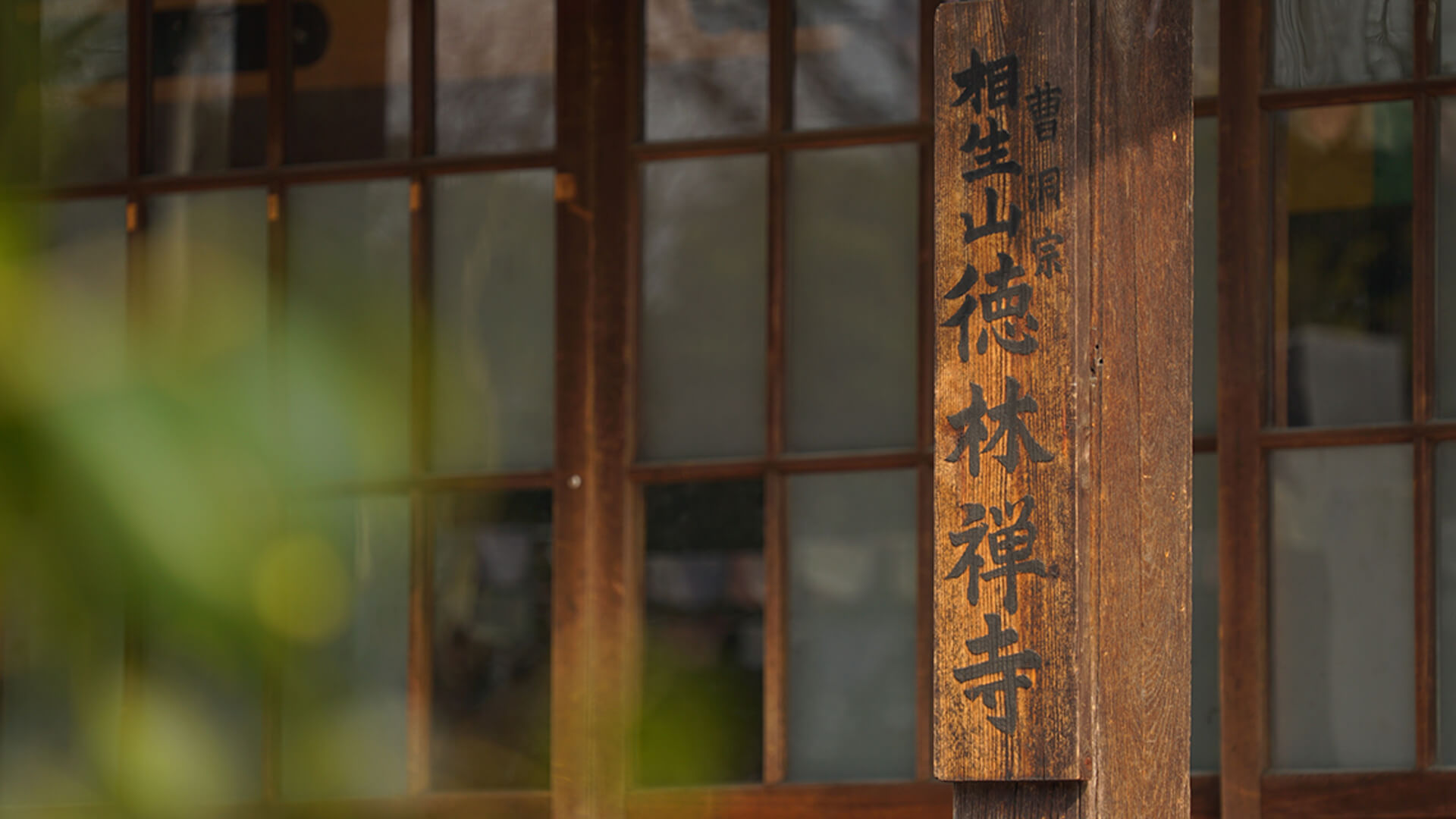
The Japanese Buddhist Master Hidenobu Takaoka & His Karma with the 108 Lokesvaras
Master Takaoka had been a scholar before he became a monk. He majored in art history in college and first came to know about the 108 Lokesvaras in Nepal through a book on Buddhist iconography in India, and became increasingly interested in the Avalokitesvara cult in Nepal. Master Takaoka wanted to go to India for studies in the 1970’s by way of Nepal, but fell sick and stayed for half-a-year in Kathmandu to recuperate. That was when he made the acquaintance of Amoghavajra Bajracharya, the painter/artist who had been in charge of the 108 Lokesvaras project for the Temple of Seto Machhendranath (often called ‘Jana Bahal’). That was also the time Master Takaoka saw wood block prints of the 108 Lokesvaras for the very first time.
Master Takaoka interviewed Amoghavajra Bajracharya about the images of the Lokesvaras at the Jana Bahal and a highlight of the feedback follows. “Images of the Lokesvaras came from the very old woodblock prints stored upstairs at the Temple. But over time, the colors and shapes, as well as those Dharma objects accompanying the Lokesvaras, all became rather blurred. I was placed in charge of giving instructions for painting them over. The original Lokesvaras had been referenced off Bhattacharyya’s book ‘The Indian Buddhist Iconography’, but with quite a bit of confusion and uncertainty. We, therefore, conducted our own additional research work to include works like (Sadhanamala)、《Nispannayogavali》 and compare other images and sculptures of Lokesvara at Jana Bahal for our overall review. The renovation overhaul was completed in 1966.” Master Takaoka grasped right away that he had stumbled upon something important and precious. Around 1975 he and a few friends initiated a group dedicated to raising fund for the publication of the collection of woodblock prints of the Lokesvaras. In order to stay true of the tradition of the original work, no modern technology was allowed in reproducing the album. Instead, Nepali painters were engaged to draw the sketches, which were then given to Nepali Sherpa experts to base their making of the woodblocks on. Prints were then made on hand-made paper locally produced in the Himalayas.
In 1979 the Japanese version of a book titled ‘An Introduction to the 108 Lokesvaras in Nepal’ was published as a compilation of stories and legends relevant to Avalokitesvara Bodhisattva , and, above all, based on an abbreviated version of the pictorial album that Master Takaoka had raised fund to publish earlier in 1975. Then in 1990 a photo album with pictures taken by Master Takaoka of the Lokesvaras at Jana Bahal, which proved to be the earliest photographic presentation of the 108 Lokesvaras.
There is an interesting anecdote how Master Takaoka managed to take pictures of the 108 Lokesvaras at Jana Bahal. The images at the temple were protected with a shield of glass, but years of neglected maintenance and the glass panes became too dusted for any camera lens. Master Takaoka negotiated with Amoghavajra Bajracharya and bargained for a permit to remove the glass protection for cleaning before putting it back on and optimize the window of opportunity by taking photos of the images of the 108 Lokesvaras. A vow was pledged, and after three rounds of fund-raising for phased publishing, the photo album finally became a publication.
Footnote/Remark - The Quan Yin (Kannon) cult in Japan & How People worship at Jana Bahal
The Guan Yin (Quan Yin in SE-Asia and Kannon in Japan) worship is widespread in Japan and examples include the 33 Kannons and the 100 Kannons. The set of 33 Kannons took quite a while to form a base then grew and expanded to reach popularity. The set of 100 Kannons was a mathematical growth (33 times 3 plus 1). There are a hundred Kannon temples in Japan, and a pilgrimage can require a visit to either just 33 or all 100 temples depending on which tradition you follow.
Master Takaoka also shared what he saw as to how people would pray and worship at the Jana Bahal. Every morning at daybreak, people (mostly women) would gather on the temple plaza to recite the holy names of the 108 Lokesvaras and that remains the standard practice. Further, on the 8th day of every month and in the name of Amoghapasa Lokesvara , a more formal and solemn ritual would be performed.


Cultural Inheritance of Master Takaoka
Master Takaoka had the experience of living in Nepal and had the chance of the first-hand contact with scriptures in hand-written Sanskrit. He also witnessed how such scriptures were applied in rituals. But modernization and people’s greed led to sales of such old texts and scriptures, and people simply ignored his appeal NOT to sell off such precious texts. He did not have the money to keep the old scriptures off the market by buying them up. So he did what he could - he took pictures of the texts as a sort of preservation of kind. Such was the background for Master Takaoka’s efforts in recent years to restore the Nepali culture by preserving the paper version of scriptures, while digitizing them at the same time.
Master Takaoka and a few people have set up a research center near Kathmandu to help preserve the Nepali culture. The center employs a pronged focus with equal emphasis on preserving antique scriptures written in Sanskrit - a language still in daily use by people in Nepal, as well as on digitizing the scriptures for preservation and for digital sharing with the world, too. Along the way it was realized that young local talents need to be cultivated to help elevate the proficiency in the target language.
There are, of course, local initiatives that concentrate on preserving old scriptures written in Sanskrit while digitizing them. For our part and in the case of the 108 Lokesvaras, our approach in contributing to the preservation of the Nepali culture is by commissioning to have two distinctive sets of the 108 Lokesvaras reproduced for inheritance alongside other objectives. Master Takaoka seemed very impressed by the LJM projects, and he agreed that the task of cultural preservation ought to involve as many people as possible for the optimal synergy.
We couldn’t help but notice an odd phenomenon, in that the local people did not seem to think much of the 108 Lokesvaras and only began to pay more attention to them, with international interest in the subject matter on the rise. Such cultural feedback, in fact, can work to the advantage of local thrusts to heighten the level of awareness and visibility of the case in point.
.jpg)
